Staycation in
a Battle Zone

COLIN SIMPSON and SUE BRATTLE
IN NORMAL times, this post would be called something like “7 Places You Simply Must See in Hong Kong”. But things have not been normal in the city since April, when large-scale protests against an extradition bill began.
The bill, which would have allowed extraditions to mainland China, has since been dropped. But the protests have continued as those involved pursue other demands.
Escalating levels of violence and destruction of property have created a sombre backdrop to life in what used to be a fun, buzzy place to live.
Tourist arrivals plummeted as the world watched endless news reports showing burning barricades, shops and train stations. Figures released yesterday by the Hong Kong Tourism Board show that total visitor arrivals in September were down 34 percent compared with the same month last year. The number coming from mainland China fell 35 percent, and hotels report a 50 percent drop in revenues. Tourism is one of four “pillar industries” that have driven Hong Kong’s economic growth.
We decided to see how all this was playing out on the ground by visiting a selection of popular tourist sites across the territory and reporting what we saw. So we had a week-long staycation – spending each night at our apartment and going out every day to be tourists.
The months of upheaval on the streets have affected many people’s mood – in the words of one expat we spoke to, Hong Kong has become “a sad city”. We also wanted to see if it was possible to get away from the protests and relax while remaining in Hong Kong.
Sustainable tourism has become a hot topic, and of course flight-free staycations are about as green as you can get. We travelled only by bus, ferry and – in one case – funicular railway during our week as tourists in our adopted home city.
Violence reached a new level this weekend as demonstrators clashed with police across Hong Kong for 12 hours.
We won’t be commenting on the issues that triggered the protests or the response of the authorities – this is a travel, not a politics, platform. We simply want to gauge the impact of these events on a cross-section of attractions on a city that is highly dependent on tourism.
1) Sunday Afternoon on the Peak

EVERY first-time tourist in Hong Kong makes a beeline for the Peak, the lofty viewpoint that offers spectacular views over Hong Kong Island and across Victoria Harbour to Kowloon. Since 1888, the best way to get there has been the Peak Tram, a funicular railway that speeds up the slope, through leafy forests, in seven minutes and offers tantalising glimpses of the city along the way.
Now the tram has become a striking example of how tourism has been hit by the protests. The service recently reopened after a major refurbishment, but before the closure – and the protests – two-hour queues to get on board in Central were standard. When we turned up on a Sunday in October, we walked straight on to the platform and waited just a couple of minutes to take our seats and start the ride.
Last month, protestors held a peaceful demonstration at the Peak, but when we arrived there was no sign of them. Nor was there any damage to buildings or graffiti, which you encounter in many parts of Hong Kong. We were not surprised to find that there weren’t many tourists, and the restaurants in the Peak’s two malls had loads of empty tables. (It’s Hong Kong, so there have to be malls – them’s the rules.)
Read MoreThe Peak has a wonderful natural location and the views are fabulous, but it has to be said that the concessions made to tourism have not done it many favours. When you get off the tram at the top you walk through a tacky gift shop stocked with garishly coloured items – key rings, nail clippers, panda toys – that were presumably meant for those missing mainland visitors. There’s an unappealing Madame Tussauds place, and the whole site is overdeveloped. At least the toilets have been upgraded.
After having a look around and paying an extortionate HK$120 (US$15.30) for two drippy, single-scoop ice creams, we headed off down one of our favourite walking routes, the Morning Trail. As we left we wondered what level of unrest would be needed for the law of supply and demand to impact greedy ice cream vendors.
The trail took us to Sai Ying Pun, a historical district to the west of the city where we used to live. It’s a sensitive area as it’s close to the liaison office that represents the Beijing central government and has been the focus of some protests. Nevertheless, SYP seemed its normal, messy self, and the only sign that things had changed was the presence of police patrols, each six strong with two officers carrying round riot shields. We had never seen these before, but they have been appearing on the streets across Hong Kong.
We walked back to Central via the terminal where ferries for the nearby gambling hub of Macau leave. This is often a crazily busy place packed with mainlanders, but this time it was quiet. The Starbucks was shut – a mainland company that’s hated by the protesters owns the franchise in Hong Kong.
Verdict: The Peak, for all the commercialisation and the sense of unease in the city, is always a great visit and, whisper it, the absence of crowds makes it even better.
Top tip: Don’t make the mistake of getting there, heading for the viewing platforms on top of the malls and then going straight back to Central. The walking trails are really great, so allow enough time to explore one of them and enjoy the clean air. – CS
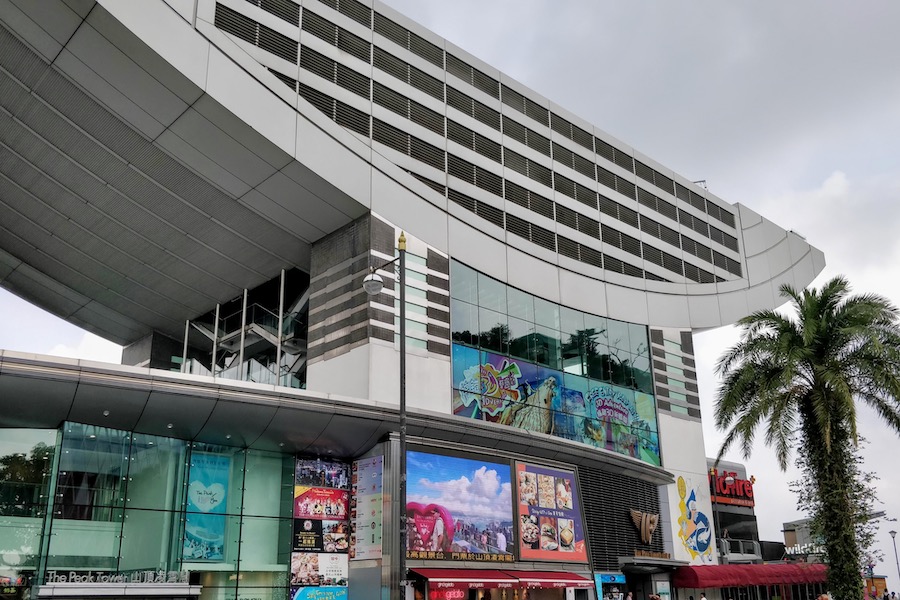

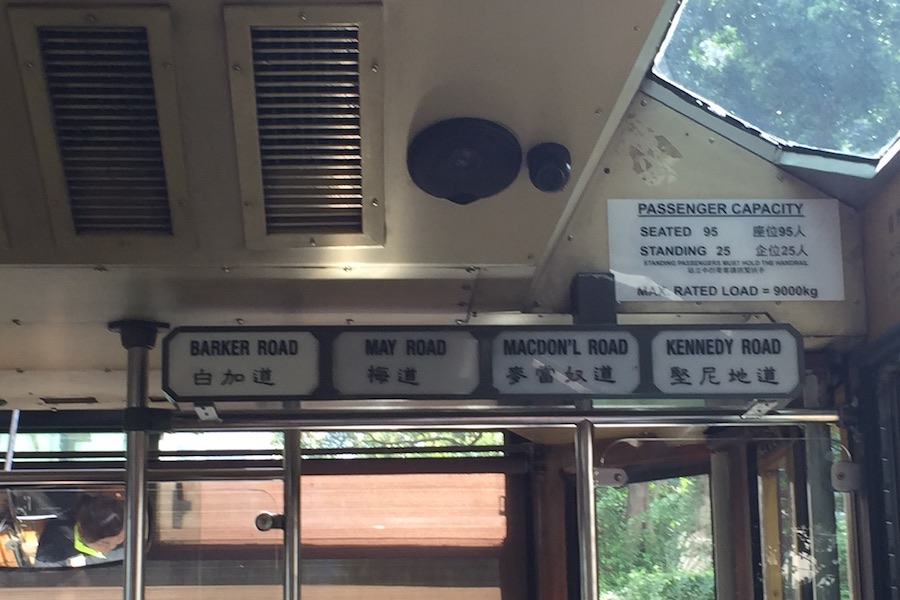


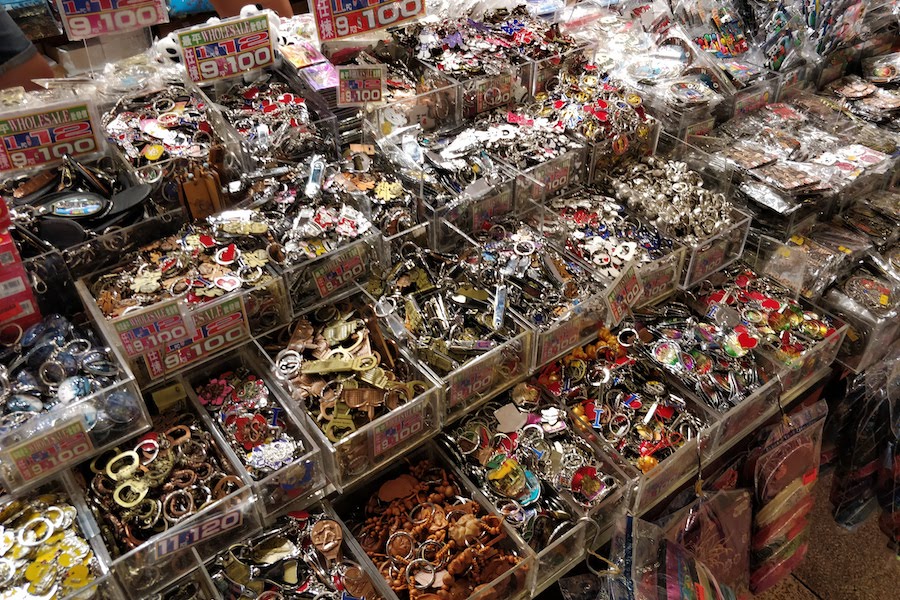
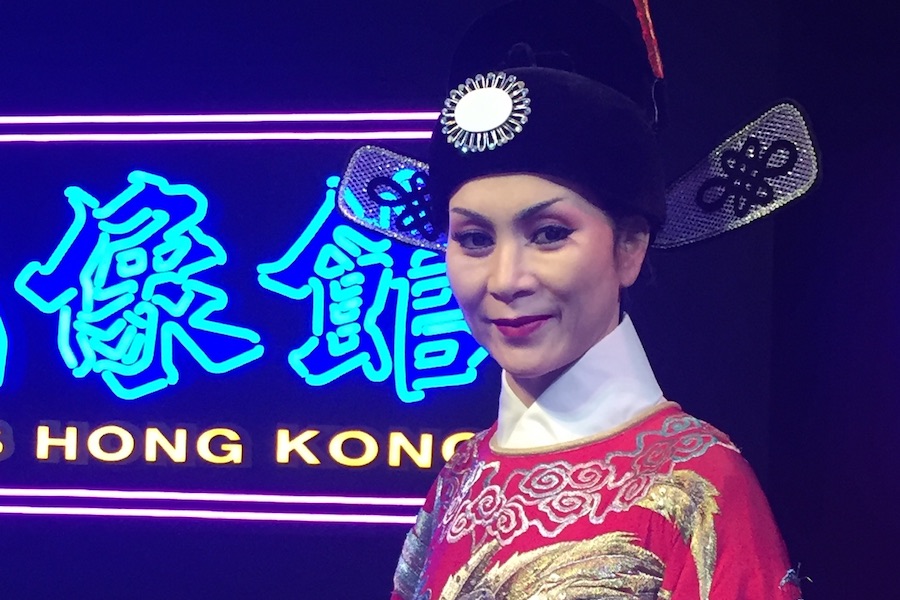
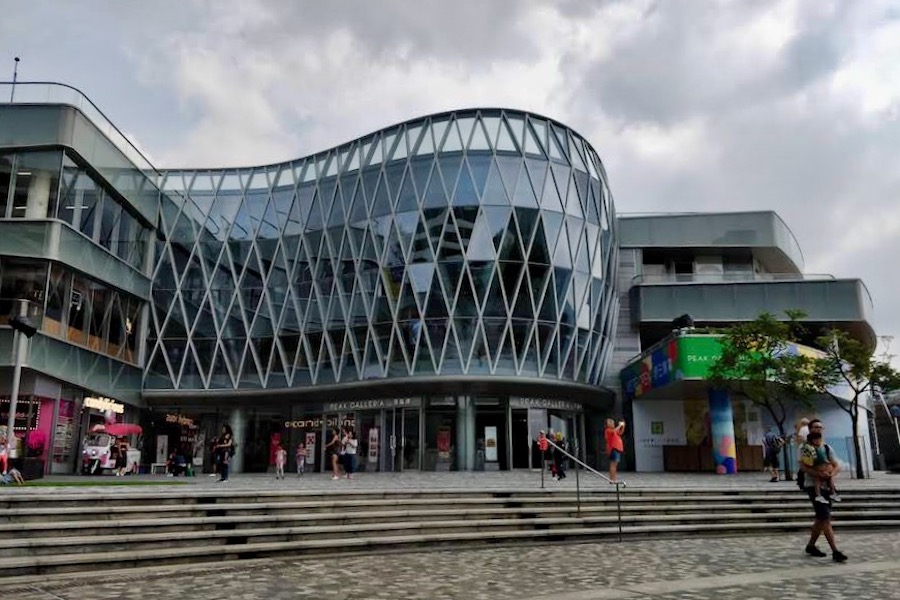

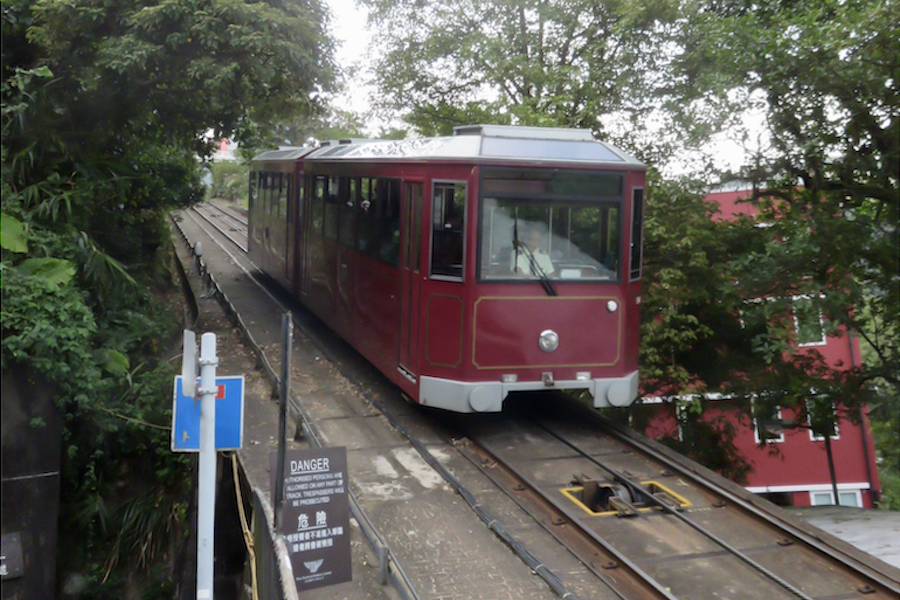


Peak Tower mall
Peak Tower mall
Peak Tower mall
Peak Tram station in Central
Peak Tram station in Central
Peak Tram station in Central
Sign on tram
Sign on tram
Sign on tram
Hong Kong from the Peak
Hong Kong from the Peak
Hong Kong from the Peak
No queue to go back down
No queue to go back down
No queue to go back down
Tacky gift shop
Tacky gift shop
Tacky gift shop
Madame Tussauds
Madame Tussauds
Madame Tussauds
Quiet shopping precinct
Quiet shopping precinct
Quiet shopping precinct
Gordon Ramsay restaurant
Gordon Ramsay restaurant
Gordon Ramsay restaurant
Tram heads down
Tram heads down
Tram heads down
Macau terminal Starbucks
Macau terminal Starbucks
Macau terminal Starbucks
Sai Ying Pun police patrol
Sai Ying Pun police patrol
Sai Ying Pun police patrol
2) A Day Out in the Country
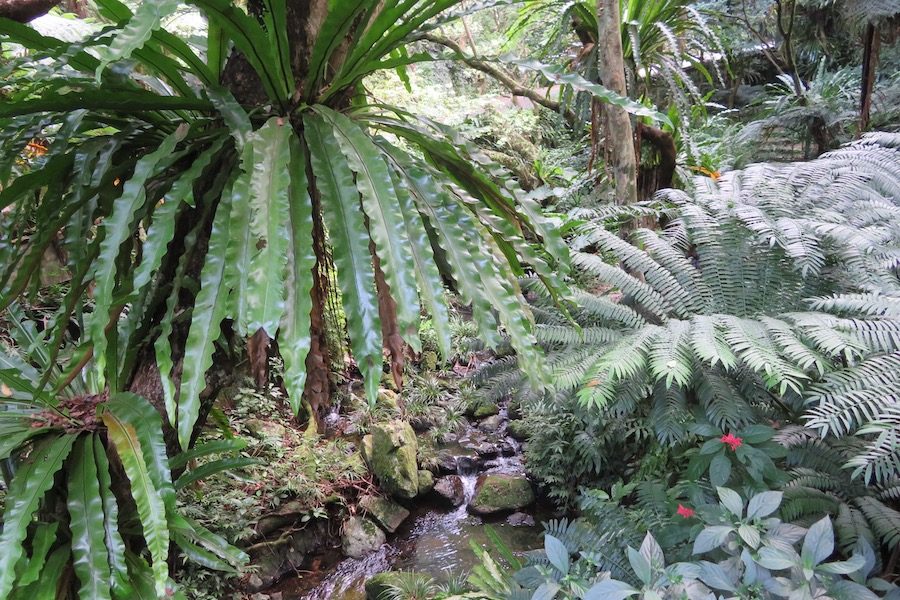
I LIKE everything about Kadoorie Farm and Botanic Garden, from its sense of tranquillity, the friendly staff, its ethics, the views… and it’s a really cheap day out.
It’s free if you’re under five or over 60, and HK$5 (64 US cents) for the 1.5 hour shuttle bus service that takes you all over the site and drops you off for short walks at points of interest. The highest-priced adult ticket is HK$30 (US$3.8), and once you’re in, you can stay all day to walk, gaze, or daydream.
Oh, there is one downside – it’s at Tai Po in the New Territories and for many it’s a trek to get there. For us it was three bus rides each way. However, the reward is that you’re really out in the countryside and have left urban Hong Kong well behind. Because the farm and garden are on a hill, once you’re at the top you can see clearly for miles around.
About the hill; that does mean, of course, that for a lot of the day you’re walking uphill, and it’s steep. With tourism down, there were only four people on our shuttle bus (there are four buses each day) but I imagine the bus struggles up the slopes when it is full. When you get off the bus, there are still usually steep paths or flights of steps to get anywhere, so be warned.
Read MoreIt’s an amazing story, told quite well in the modest farm museum which shares a roof with the farm shop and book shop. Again, everything from plants to fruit & veg are priced very low. I wished we had a car; I’d have stocked up on the many varieties of herb plants on offer at HK$10-20 each.
However, for me there were two highlights. First, the rescued raptors, which have a home for life if they need it. So an enormous owl that can’t fly, and a black kite with cataracts in both eyes are safe and cared for. There’s a snake hand-in point as well, and they get looked after if needed.
My other favourite was the wildlife pond. That may not sound exciting, but was a perfectly peaceful spot where I sat for a while spotting some of the 158 species of dragonflies flitting across the water and sunning themselves. Lovely.
There’s a small café (cheap, of course) which makes good coffee, refreshing teas and jolly nice muffins, along with other things. And the bus stops right outside the entrance gate.
Verdict: Dirt cheap day out and you really can get away from it all.
Top tips: Check your bus routes; they don’t necessarily use the same roads in both directions, so we had to do some quick map-reading in Tai Po to catch our connection. Wear sturdy walking shoes.
Postscript: No one in Hong Kong remains untouched by the protests. The Kadoorie family is the biggest shareholder in the company that owns the Peninsula hotel chain. When protestors and police clashed outside the flagship property in Kowloon on Sunday, the hotel opened its doors to help people affected by tear gas. – SB

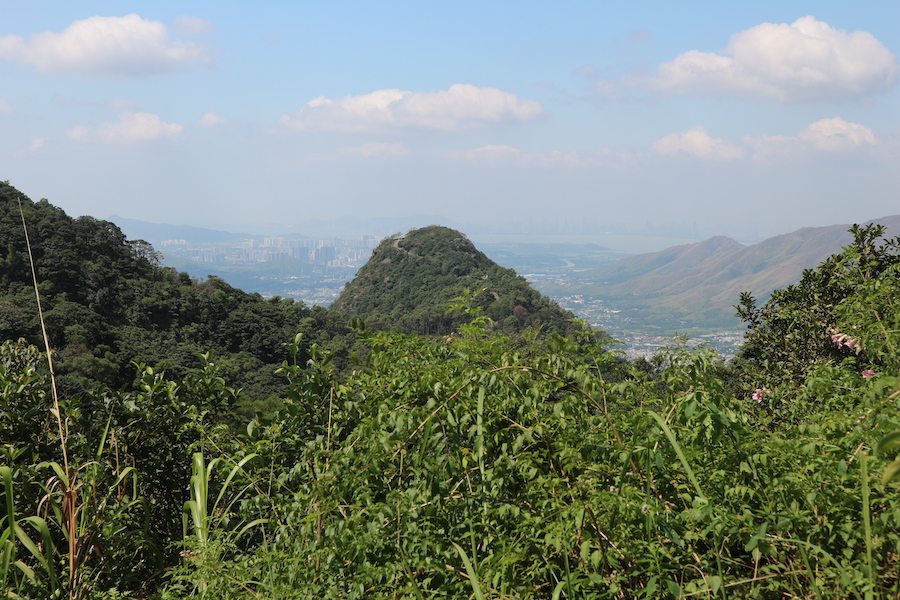
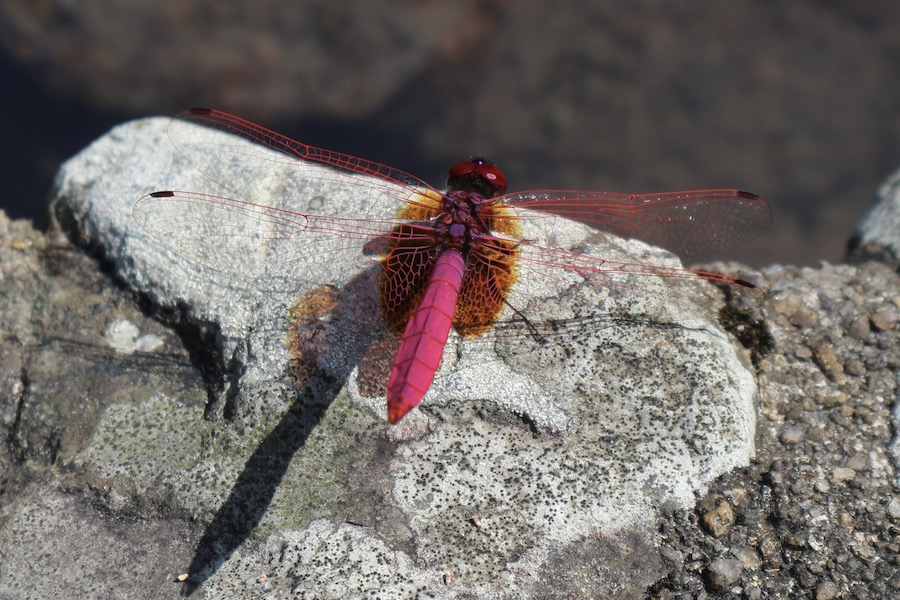
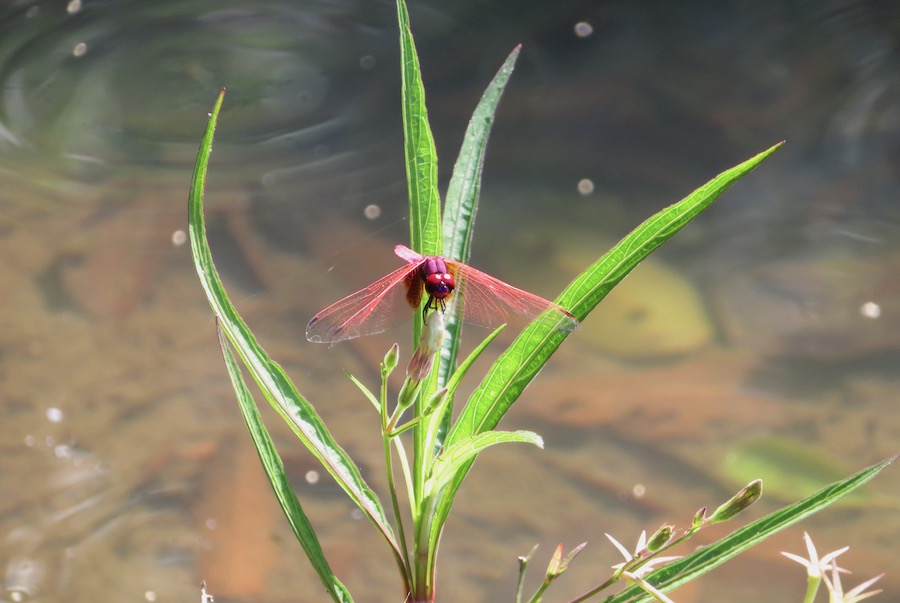
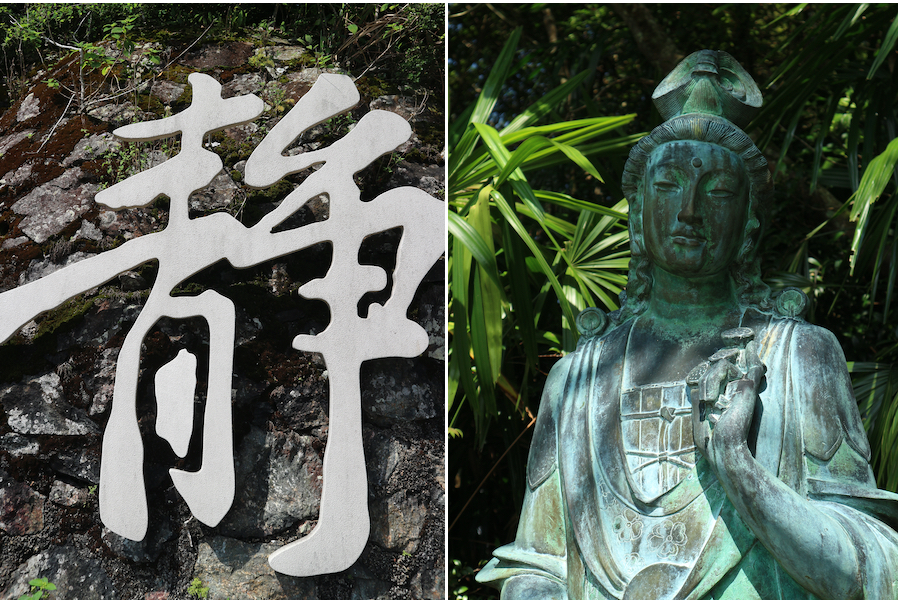
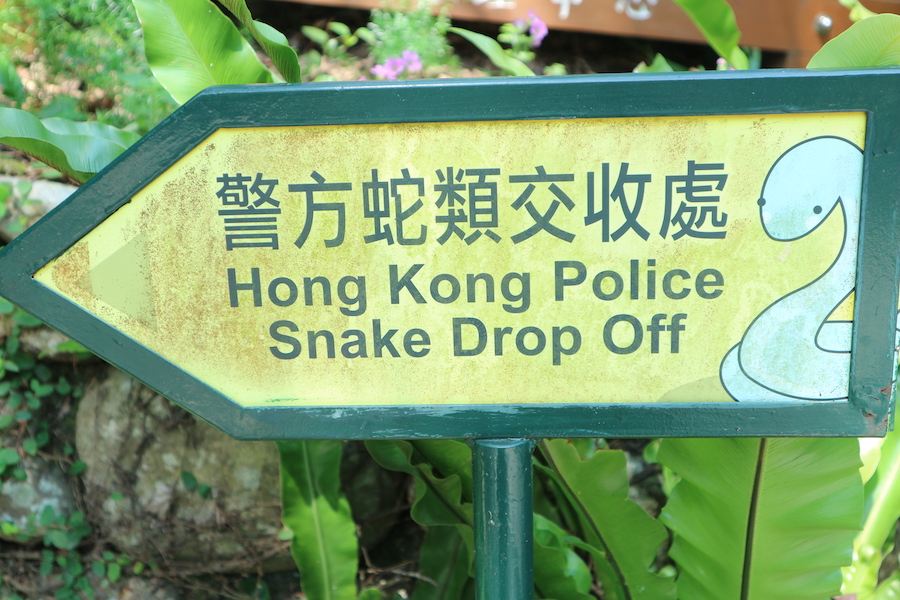
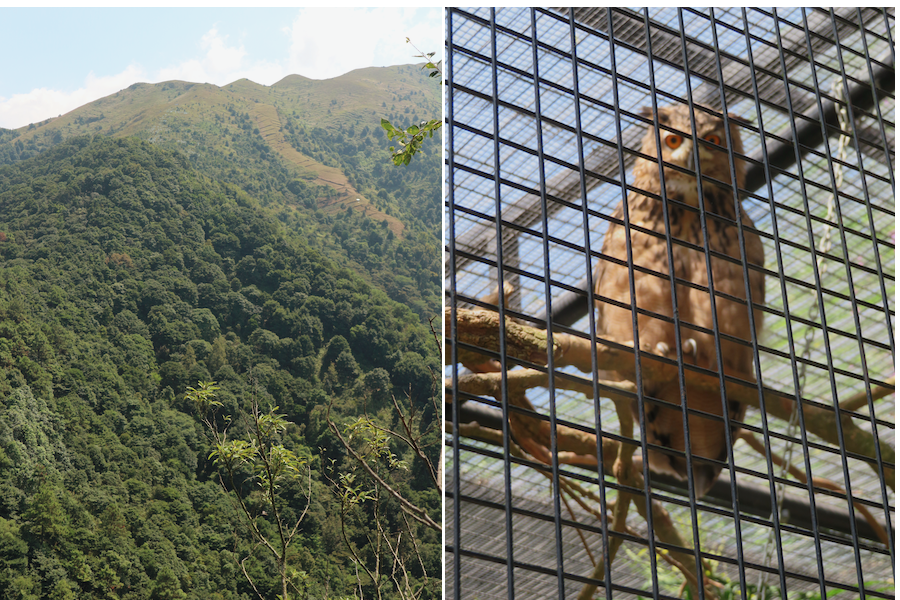
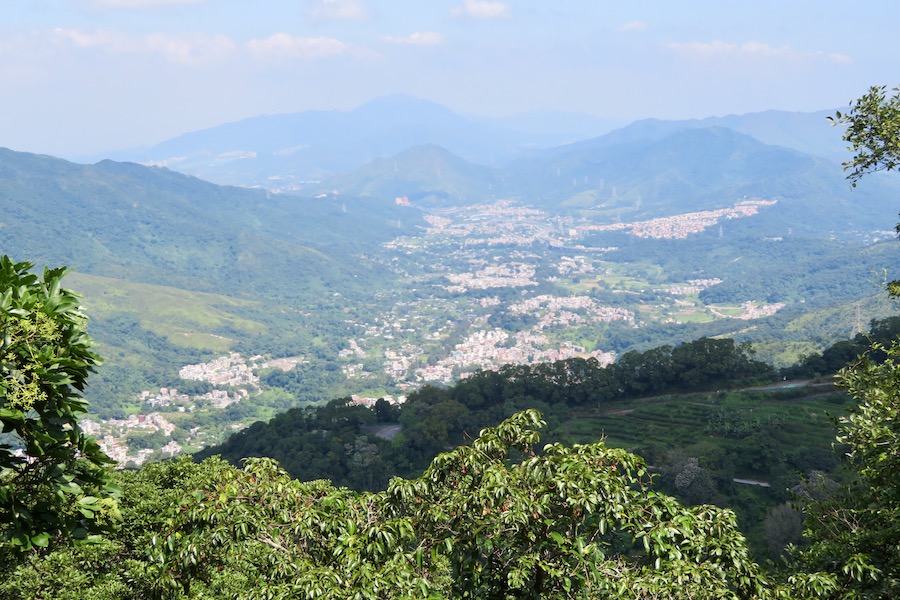
Sue with statue of Sir Horace Kadoorie
Sue with statue of Sir Horace Kadoorie
Sue with statue of Sir Horace Kadoorie
View from Kadoorie brothers' memorial
View from Kadoorie brothers' memorial
View from Kadoorie brothers' memorial
158 species of dragonfly live here
158 species of dragonfly live here
158 species of dragonfly live here
Wonderful wildlife pond
Wonderful wildlife pond
Wonderful wildlife pond
Snakes are brought to farm for treatment
Snakes are brought to farm for treatment
Snakes are brought to farm for treatment
Tree planting project and rescued owl
Tree planting project and rescued owl
Tree planting project and rescued owl
View from Kadoorie brothers' memorial
View from Kadoorie brothers' memorial
View from Kadoorie brothers' memorial
3) A Night at Happy Valley Races

THE phrase “it’s an institution” is pretty overused by travel writers. Often it’s trotted out when the author is too lazy to think of something else. A bar that’s been open a few years, for example, is described as “a Dubai (or wherever) institution”.
When it comes to horse racing in Hong Kong, though, now that really IS an institution. The first race meeting in Hong Kong took place at Happy Valley in 1846 – just four years after the territory was ceded to Britain by China. The Hong Kong Jockey Club, which today runs the sport as a monopoly, was formed in 1884.
Racing has become phenomenally popular and generates huge amounts of money, with the club giving large sums to charitable causes – HK$4.3 billion (US$545 million) in 2018-19.
The Wednesday night meetings at Happy Valley Racecourse on Hong Kong Island are a magnet for locals, expats and tourists. Companies with offices in the city regularly welcome colleagues from branches across Asia and beyond who look forward to a night at the races.
A typical meeting sees HK$1.1 billion gambled, with HK$115 million going to the government in tax and the club retaining HK$52 million for costs and donations.
Yet even this much-loved part of Hong Kong life has not escaped the fallout from the protests. A Happy Valley meeting due to take place on Sept. 18 was cancelled over fears of disruption. This was because a horse owned by a pro-Beijing lawmaker disliked by the demonstrators had been due to run.
Meanwhile, the annual Sunday meeting at Happy Valley which was due to take place on Oct. 27 was switched to Hong Kong’s other racecourse, Sha Tin in the New Territories, because of fears that protests would cause disruption.
The Happy Valley course, with its bank of seven-storey stands, can hold 55,000 spectators. We went there a couple of weeks ago, a fortnight after Sha Tin attracted its lowest attendance for a weekend meeting in years. Transport disruption caused by the protests and the general chaos in the city were blamed.
We were curious to see for ourselves how racing was faring amid the continuing turmoil. Our taxi took us through Causeway Bay, an upscale shopping district that has been a focus for clashes.
When we arrived the course was quiet, and we wondered whether the Sha Tin experience would be repeated. I took a photo, looking down from the grandstand, of some of many empty seats.
Gradually, however, the numbers increased and the atmosphere warmed up. People in Hong Kong work unhealthily long hours, so perhaps it was just that some had not been able to get away from the office in time for the first race.
The racecourse is a fabulous facility. Everything is smart, bright, clean and comfortable, and the night-time outlook over the floodlit turf course to the towers beyond is striking. The only downside was that we were there during the Oktoberfest celebrations, so there was an oompah band.
As the night wore on, fortified by the odd win and each-way success, we began to really enjoy ourselves, as everyone else seemed to be doing. A foray to the beer garden gave a welcome glimpse of the old Hong Kong – work hard, play hard and may the Devil take the hangover. It was great to see groups of lively, noisy people laughing, drinking and having a good time.
There has been much talk of a so-called expat bubble, of well-paid office workers from abroad continuing with their lives as if the protests weren’t happening.
I don’t buy this, as I don’t see how anyone could remain oblivious when, for example, the metro system most people rely on has been so heavily disrupted. I didn’t see a bubble at Happy Valley, just young people enjoying a fun night out that they probably felt they needed.
Besides, the racing is not just an expat party. There were many serious-looking older Hongkongers with racing papers, form guides and multiple phones.
The Sha Tin course is very much set up for the locals. It doesn’t come close to Happy Valley, though, for sheer excitement, fun and charisma.
Verdict: The old Hong Kong spirit survives at Happy Valley.
Top tip: The second floor terrace in the grandstand is a great place to watch the racing from. It costs just HK$20 to get in and you have a reserved seat, so you can head for the beer garden or check out the parade ring, then go back to the terrace. – CS
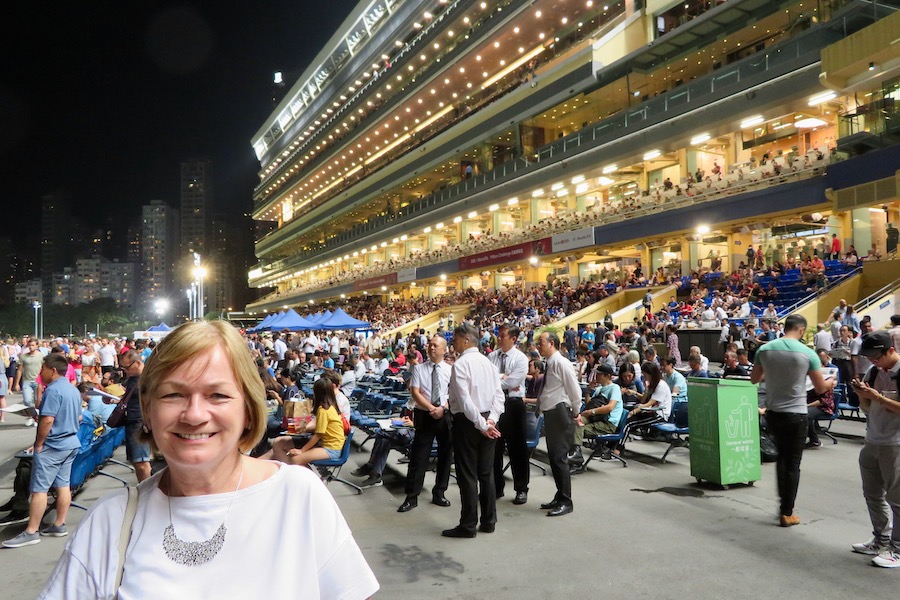






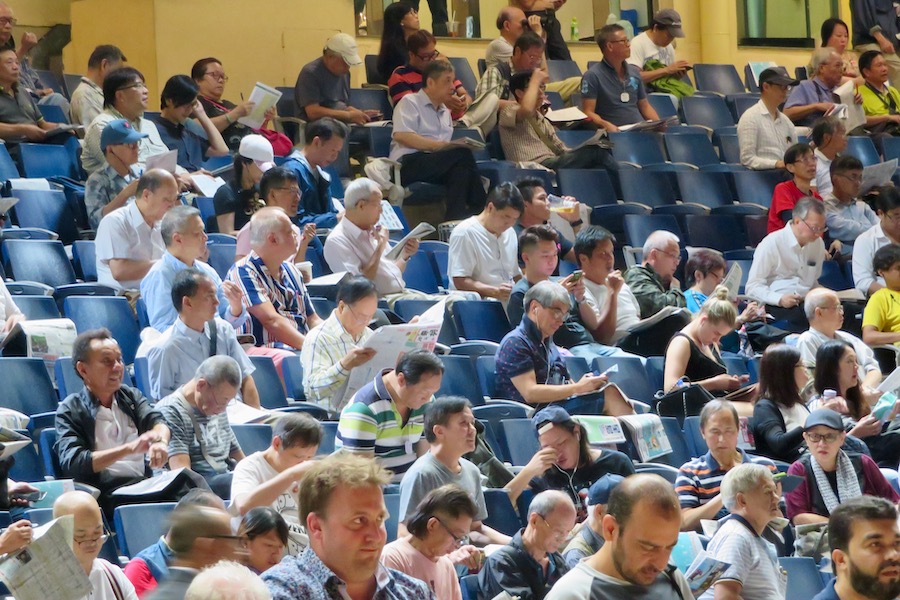

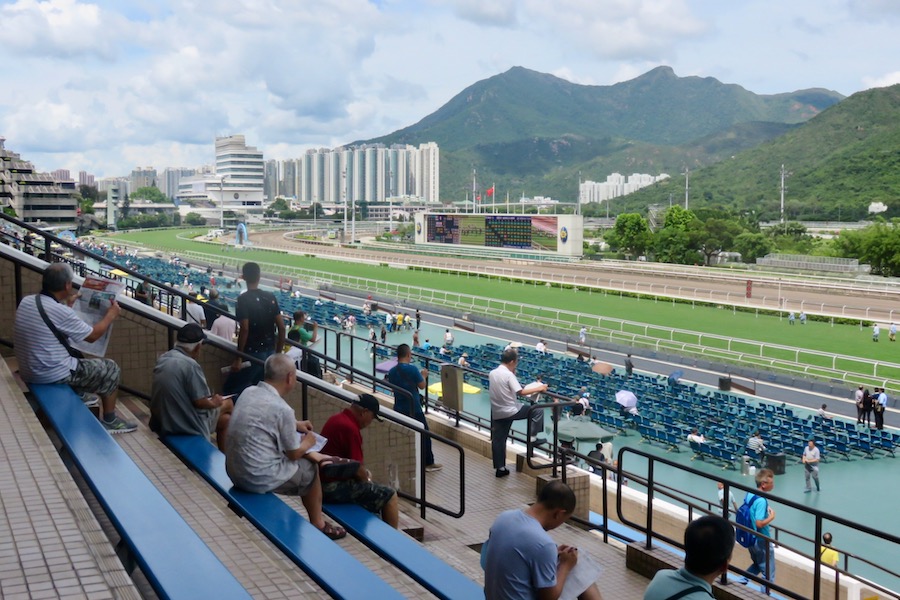

Sue at the Valley
Sue at the Valley
Sue at the Valley
Empty seats at Happy Valley
Empty seats at Happy Valley
Empty seats at Happy Valley
Empty beer garden early on
Empty beer garden early on
Empty beer garden early on
Impressive stands
Impressive stands
Impressive stands
Second-floor terrace
Second-floor terrace
Second-floor terrace
View across track
View across track
View across track
The parade ring
The parade ring
The parade ring
Packed stand later at Happy Valley
Packed stand later at Happy Valley
Packed stand later at Happy Valley
Sha Tin Racecourse
Sha Tin Racecourse
Sha Tin Racecourse
Racing at Sha Tin
Racing at Sha Tin
Racing at Sha Tin
4) A Walk Along Nathan Road
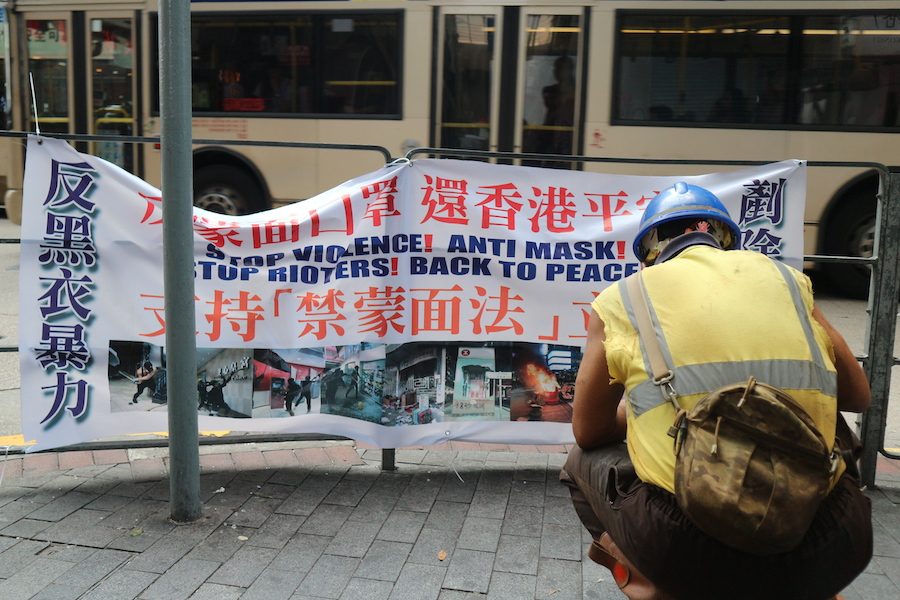
WE TOOK this two-mile stroll on Thursday, October 17. The date is important because three days later violence broke out here during a Sunday protest, with pepper spray, petrol bombs, water cannon firing blue dye, shops, banks and restaurants trashed and multiple arrests.
It’s a good example of what Colin and I wanted to do with our Staycation series. In times of unrest, things turn on a sixpence, but although the events of Sunday saddened both of us, our brief here is: Is it possible to have a holiday in Hong Kong despite the protests?
And on that Thursday we had a civilised walk in Kowloon from the wonderful Star Ferry pier to the markets in Mong Kok up to Prince Edward, the northern end of Nathan Road. In one walk you can see much of what makes Hong Kong so vibrant. Starting with posh shops (which I find bland and boring) you quickly reach delights such as Kowloon Mosque, St Andrew’s Church, and Kowloon Park.
You can go inside the mosque, unlike many I’ve known, and half an hour’s quiet contemplation in St Andrew’s makes a nice break, too. Kowloon Park has a weird yet wonderful walk of cartoon fame, with great statues.
Keep going and the atmosphere and look of the road changes. The road is still straight and quite busy, but the shops, apartment blocks, and hotels change as you approach the large Tin Hau Temple. You might like to make a diversion here to Shanghai Street just for a look, or stay on Nathan Road till you reach Mong Kok. You’re now in street market central.
If your shopping gene is going to kick in anywhere, it will be here. Just a short-ish walk from Tiffany’s near the start of the road, here you can buy endless knock-off handbags, pashminasand watches in the Temple Street night market (the first one you come to) and the Ladies Market (both of which to be honest I thought were disappointing); visit Goldfish Market and Flower Market; or, my favourite, go to Sneaker Street where everyone’s sneaker of choice is for sale in branded shops at quite decent prices. Maybe the markets have been hit by the protests. There was hardly anyone around, although things perked up in Sneaker Street, and it was really noticeable that the stock was the same on stall after stall.
However, this is the part of Nathan Road that’s awash with colourful apartment blocks, unusual little shops and side streets, and the Hong Kong I prefer. The high-end shopping malls sap my energy, but the buzzy street life is energising and, if you’re a tourist, there’s a photo opportunity everywhere you look.
So that’s our walk, a simple afternoon/evening out. Cheap, too, if you eat at one of the zillion food stalls and don’t go mad for sneakers. There was protest-related damage almost the entire length of the street, with MTR signs defaced, Chinese-owned banks and shops boarded up, and probably thousands of posters everywhere. As I said, a few days later things got a lot worse. But did we ever feel in any danger? No.
Verdict: Despite everything, something I’d recommend to every visitor and resident.
Top tip: if you do veer off to Shanghai Street you’re only a stone’s throw from the Xiqu Centre, the city’s fab new opera house, well worth a look. – SB

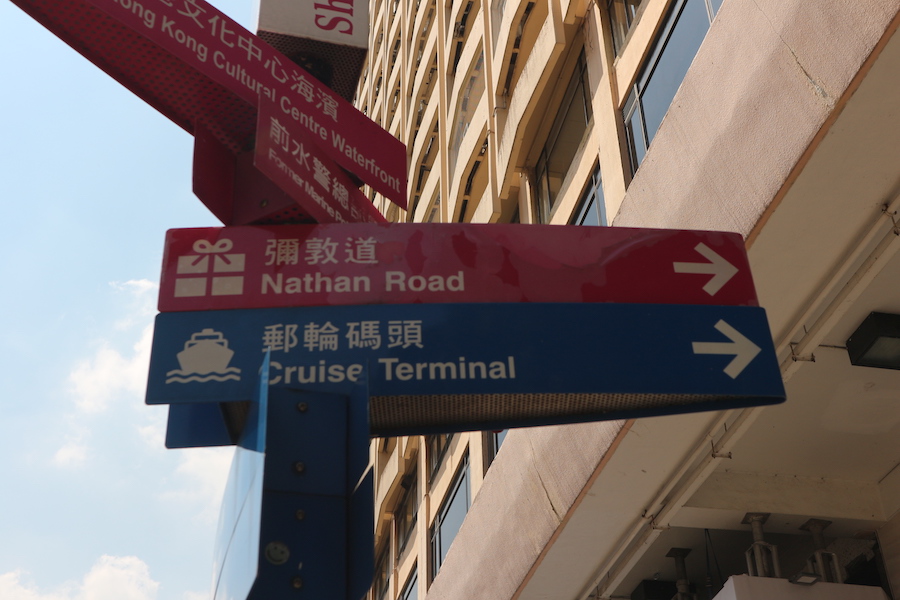
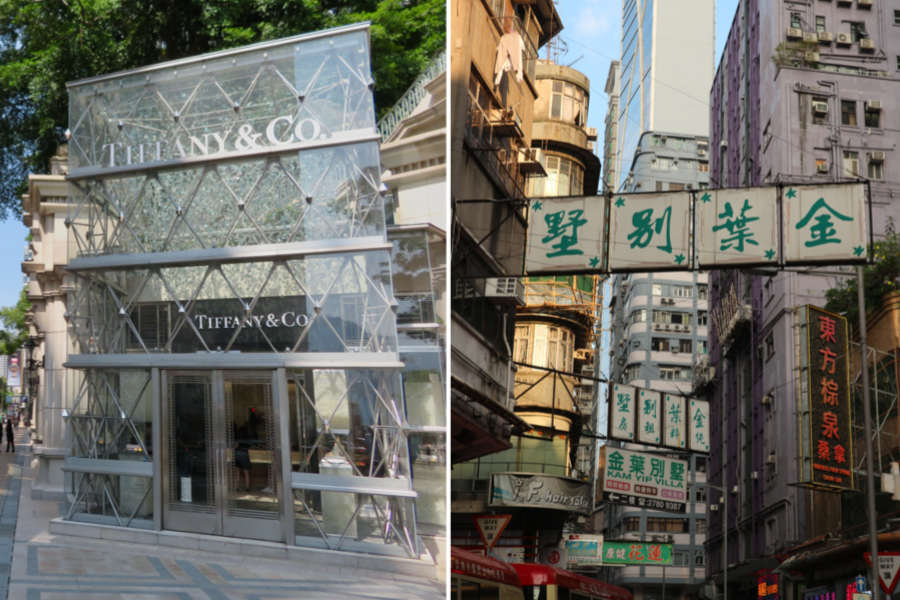
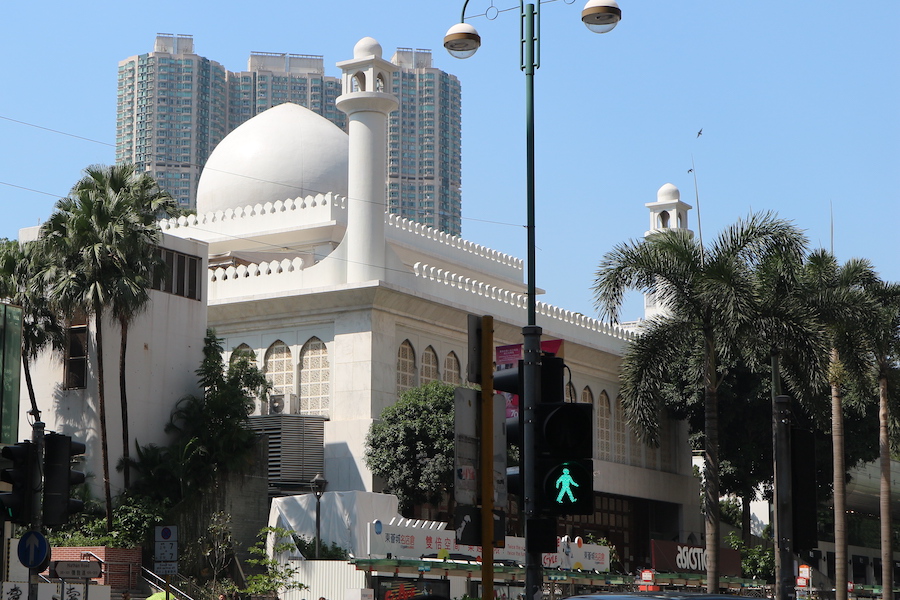
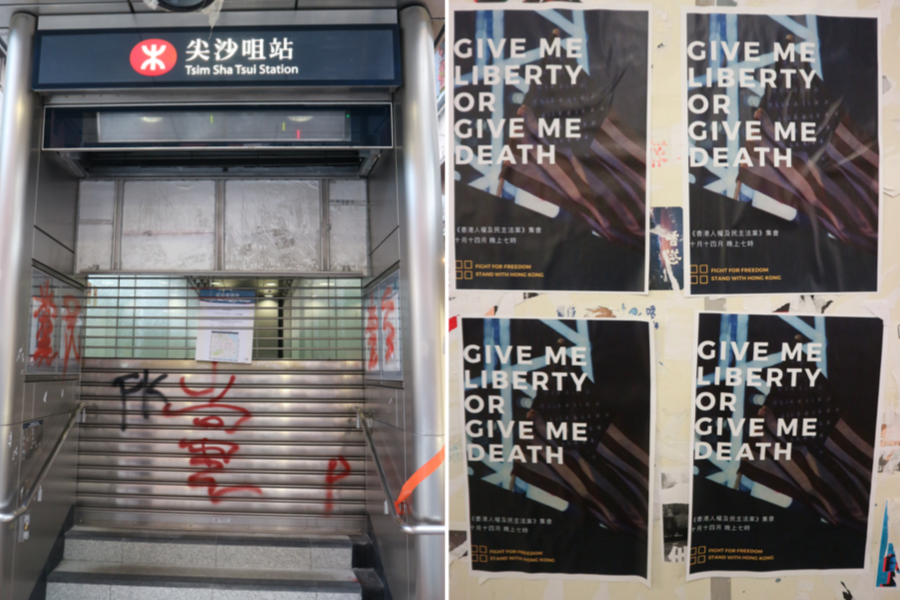
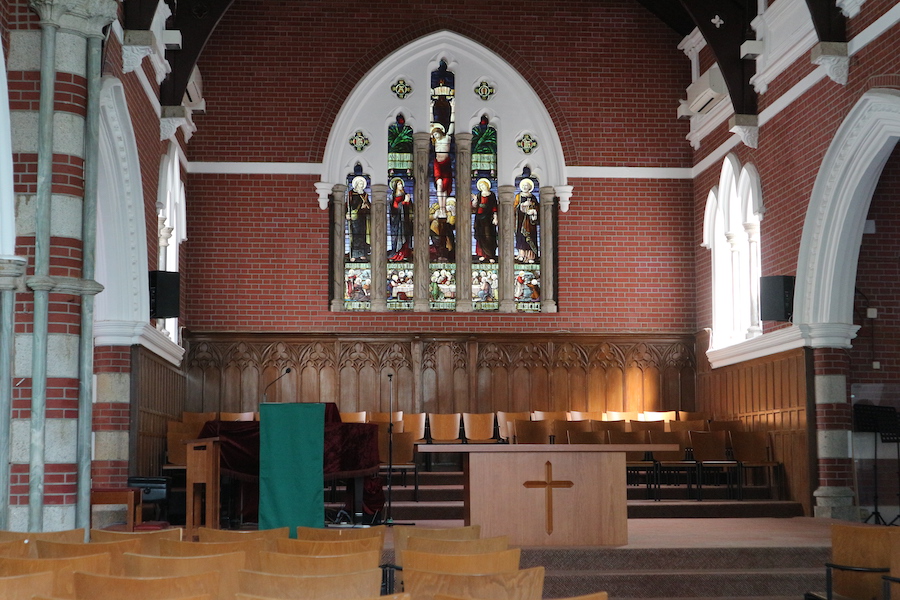
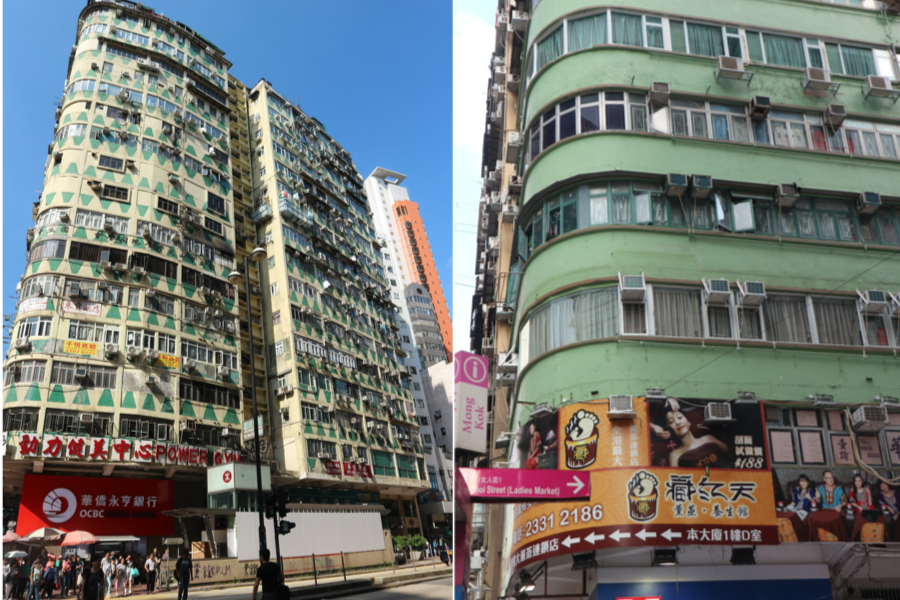
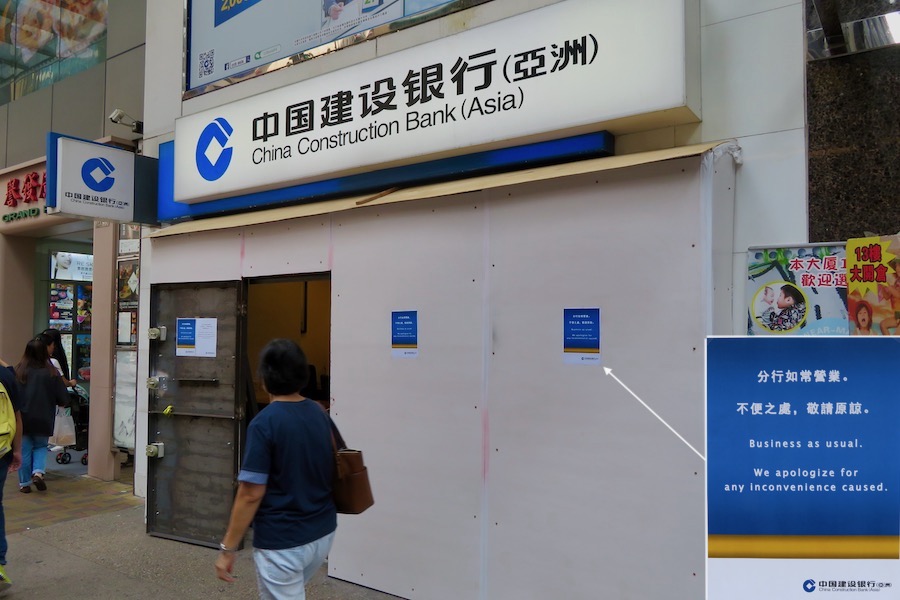
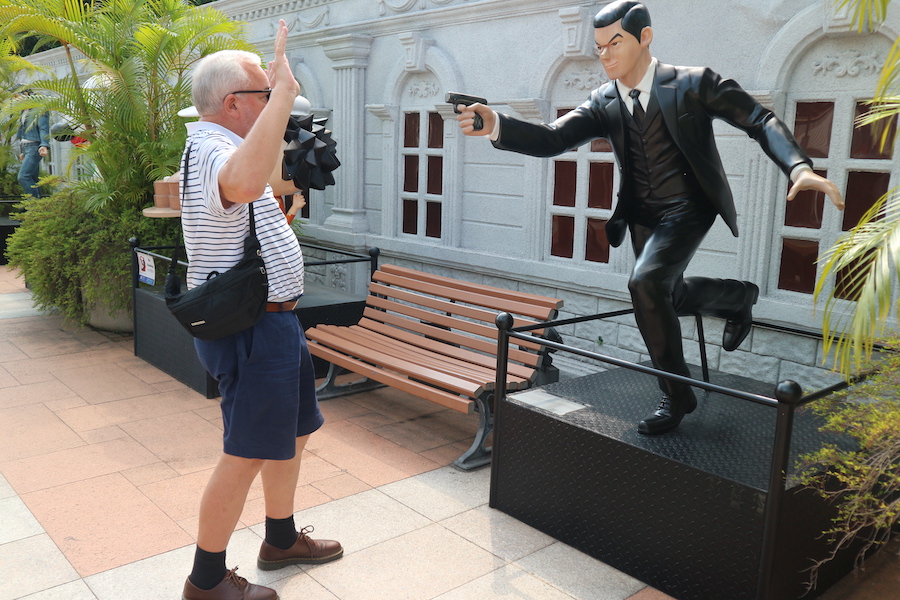

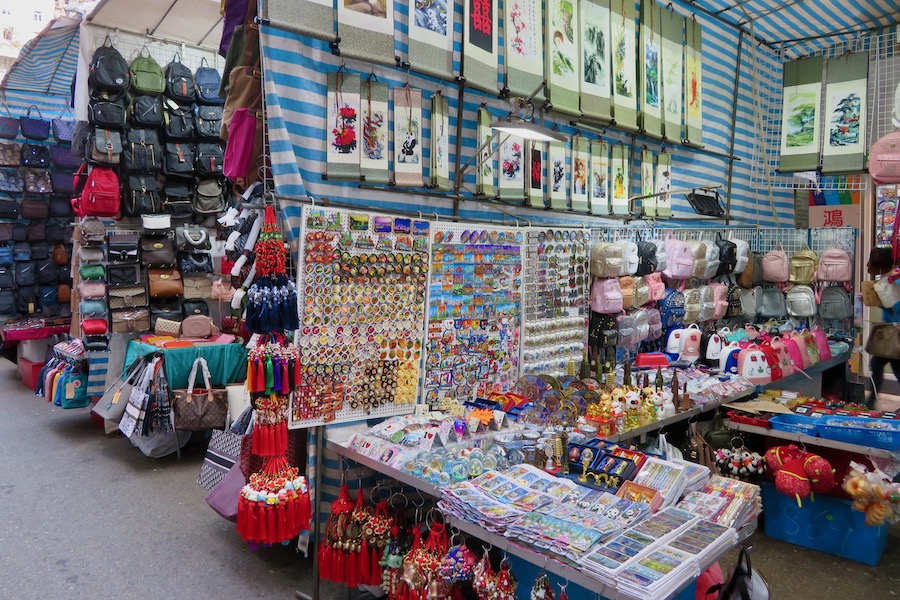
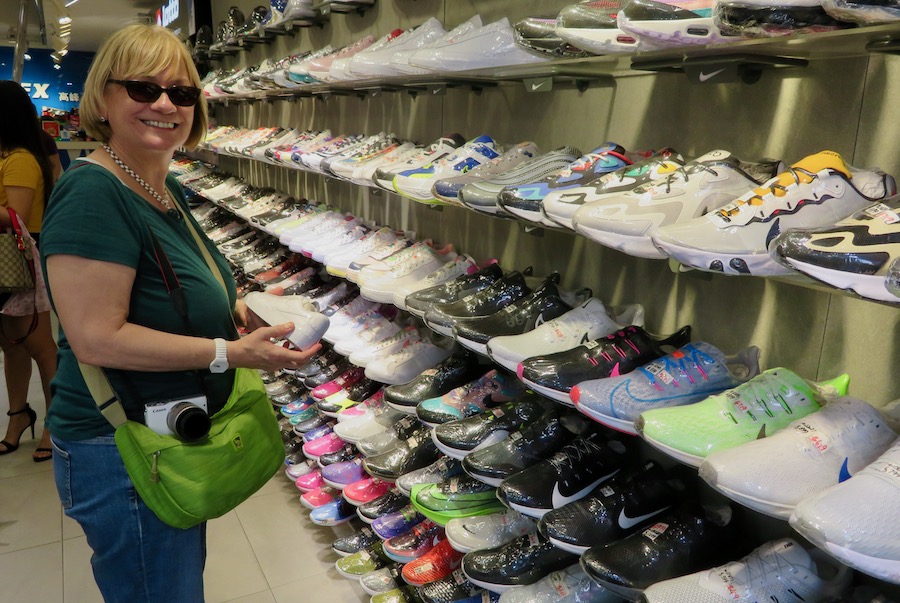
Historic Chungking Mansions
Historic Chungking Mansions
Historic Chungking Mansions
Nathan Road, shops galore
Nathan Road, shops galore
Nathan Road, shops galore
Posh v. colourful
Posh v. colourful
Posh v. colourful
Kowloon Mosque
Kowloon Mosque
Kowloon Mosque
Signs of protest
Signs of protest
Signs of protest
St Andrew's Church
St Andrew's Church
St Andrew's Church
Traditional tenement blocks
Traditional tenement blocks
Traditional tenement blocks
Damaged bank stays open
Damaged bank stays open
Damaged bank stays open
Colin and cartoon in Kowloon Park
Colin and cartoon in Kowloon Park
Colin and cartoon in Kowloon Park
Ladies Market
Ladies Market
Ladies Market
Stall at Ladies Market
Stall at Ladies Market
Stall at Ladies Market
Sue in Sneaker Street
Sue in Sneaker Street
Sue in Sneaker Street
5) A Trip to Tai O
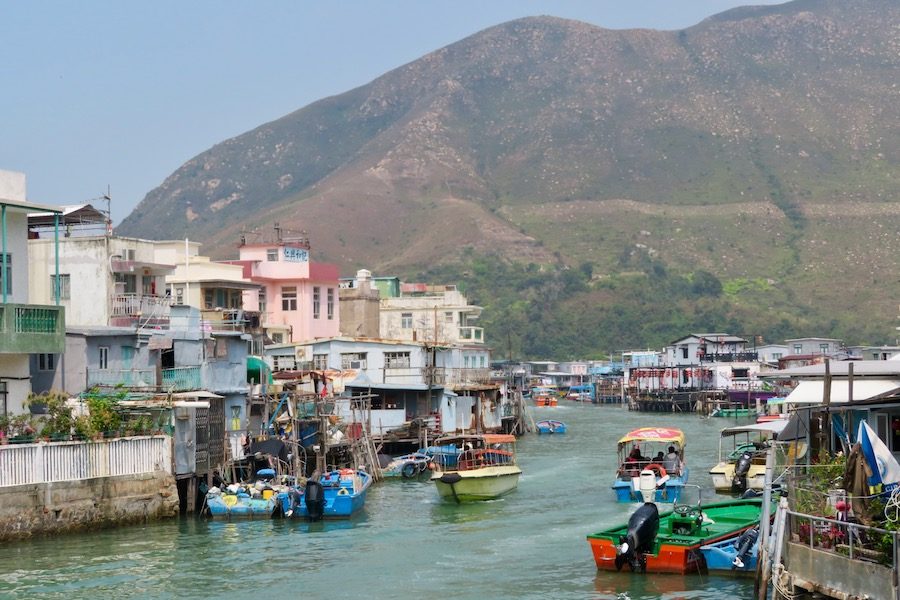
UNTIL a little while ago, if you said “Hong Kong” to someone then it’s likely the first image that would spring into their mind would be the iconic cityscape. That’s what defined the city – gleaming towers soaring skywards on both sides of Victoria Harbour.
Now, six months after the start of the anti-government protests, they would be more likely to think of burning metro stations, billowing teargas and violent clashes.
That old image of Hong Kong was misleading, though – there was always a lot more to it than skyscrapers.
Much of the territory is made up of country parks, and there are plenty of fine beaches. Then there are traditional fishing villages such as Tai O on the western edge of Lantau Island. All of these were good options when you needed a break from the frantic pace of city life.
This is more important than ever in the current difficult times. We wanted to get away from the constant reminders of the showdowns between protesters and police – the graffiti in normally pristine Central, the endless news coverage. So we decided to head off to Tai O.
Our plan didn’t start well, however. When we got to Tung Chung on our way there we found the metro station half shut because of damage caused during protests, and anti-government posters and fliers plastered everywhere.
But once we reached Tai O the only protest-related items we saw were a few of the origami cranes made by some demonstrators to promote peaceful resistance. They had been placed on a post in the centre of the village.
Not that Tai O remained untouched. A day out there has always been popular with tourists who want to see a slower, simpler, more traditional side of Hong Kong life. They came to wander through the small village with its waterways and dried seafood shops, go on short boat trips in the hope of seeing pink dolphins, and gaze up at the surrounding hills. At weekends, the narrow streets were often overwhelmed with visitors.
This time, however, we saw hardly any tourists. The dolphin boats were still going out, but with only a few people on board. And the restaurant at the Tai O Heritage Hotel, where we went for lunch, had only a handful of guests.
The hotel, a converted marine police station, has a commanding view of the bay on which Tai O stands – all the better for keeping an eye out for the smugglers who used to frequent these waters. Beyond the bay is the South China Sea, and further out, over the horizon, is mainland China. Each of the hotel rooms has a plate by the door explaining what it was originally used for.
Many of the villagers are Tankas, boat people who traditionally lived on junks. At Tai O, they have stilt houses that protrude from the shore over the water and use flat-bottomed boats known as sampans. Some make shrimp paste to sell to tourists, though personally I find its sludgy brown appearance unappealing. The village itself can look a bit sludgy when the tide is out and the muddy foreshore exposed.
We enjoyed our visit to Tai O, though. The fanciful description of it as the “Venice of the Orient” is ridiculously exaggerated, but it does have a special charm and a welcome balming effect.
Verdict: Yes, it really is possible to get right away from the protests.
Top tip: If you’re going by ferry make sure you check the times in advance, or you might find yourself waiting for hours. You can also get there by bus. – CS
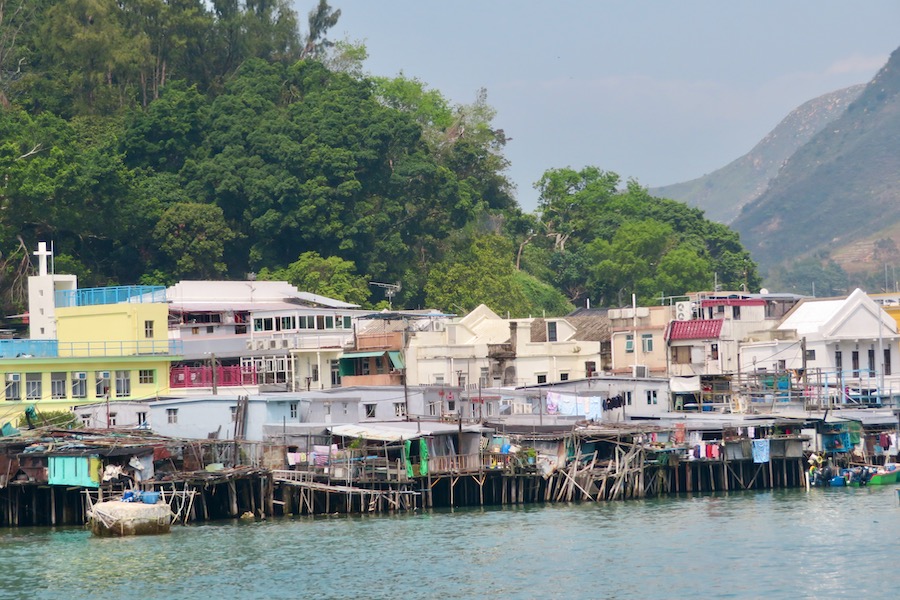
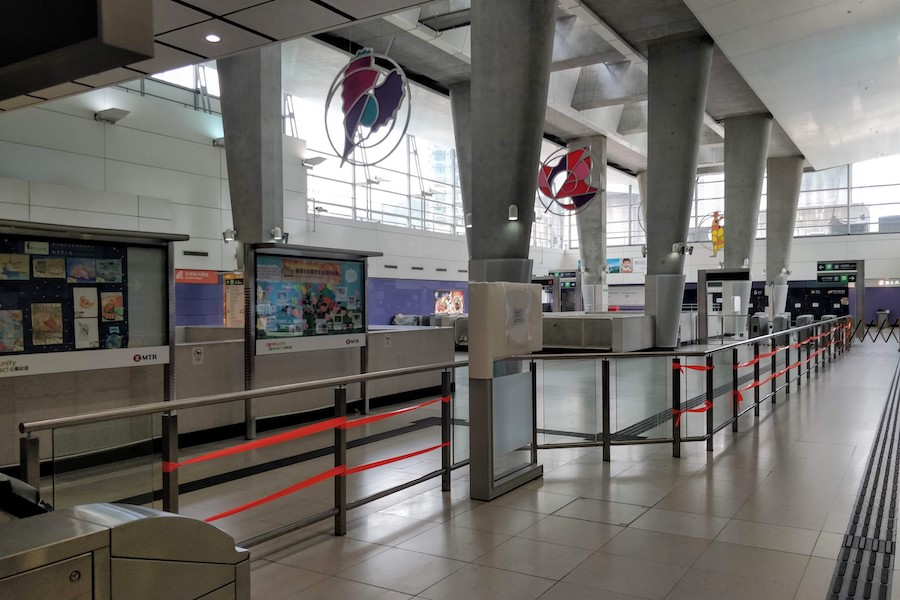


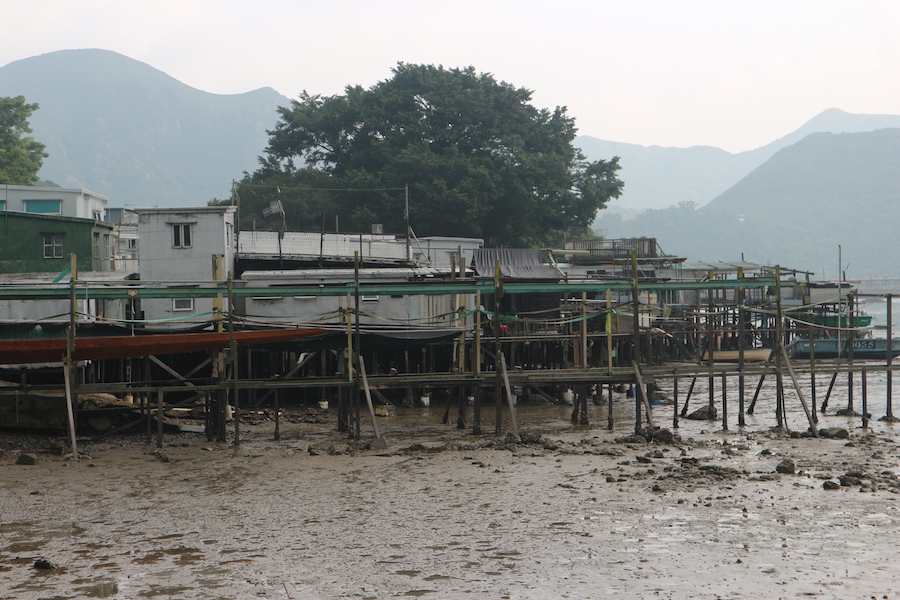
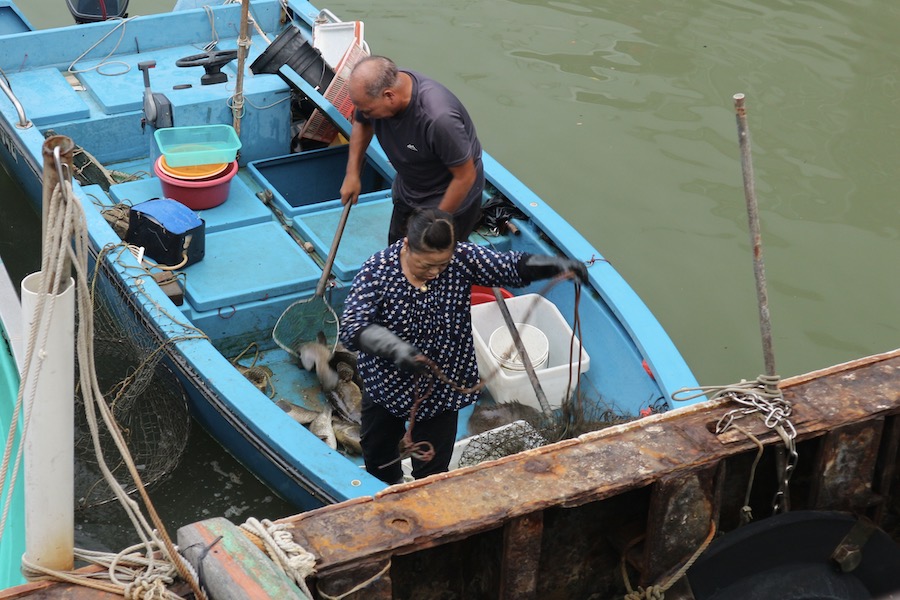


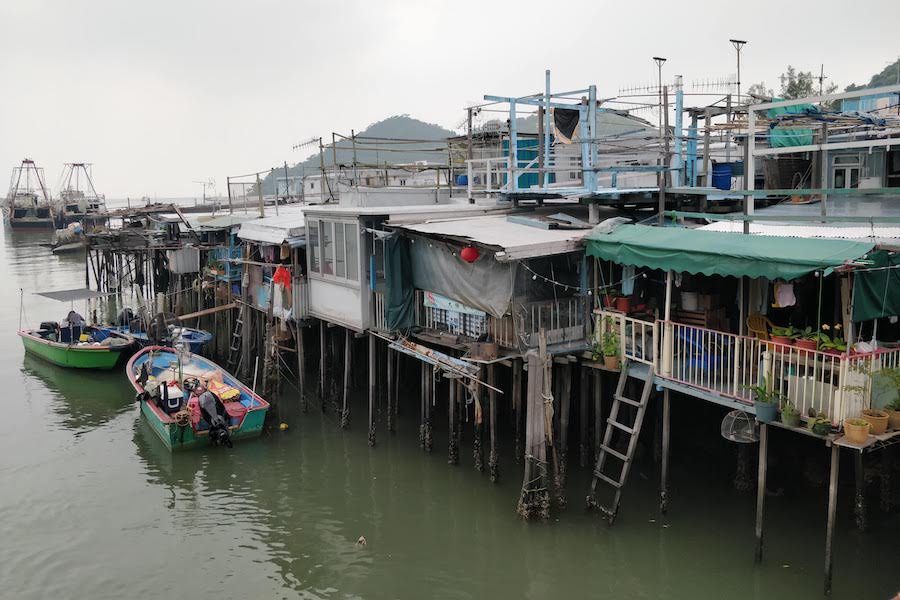
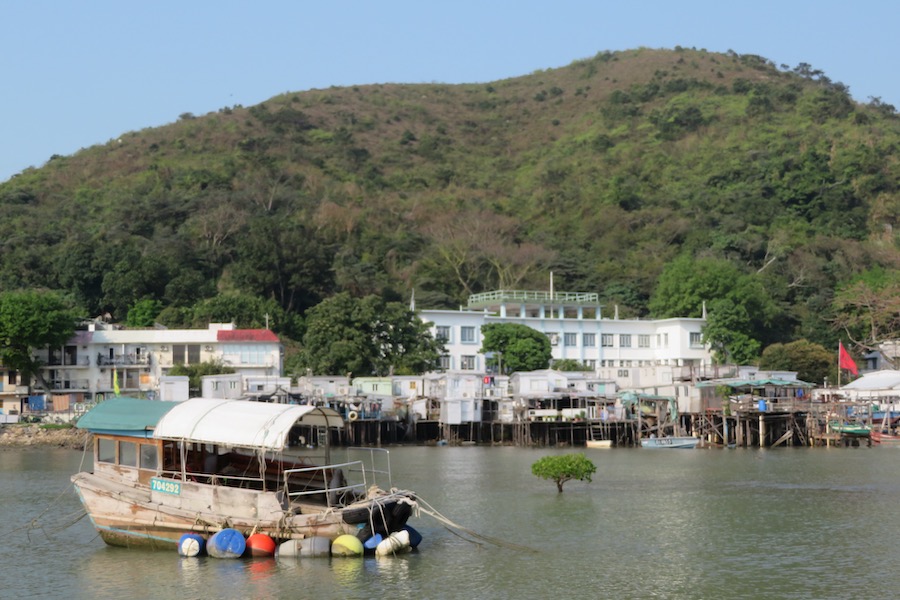

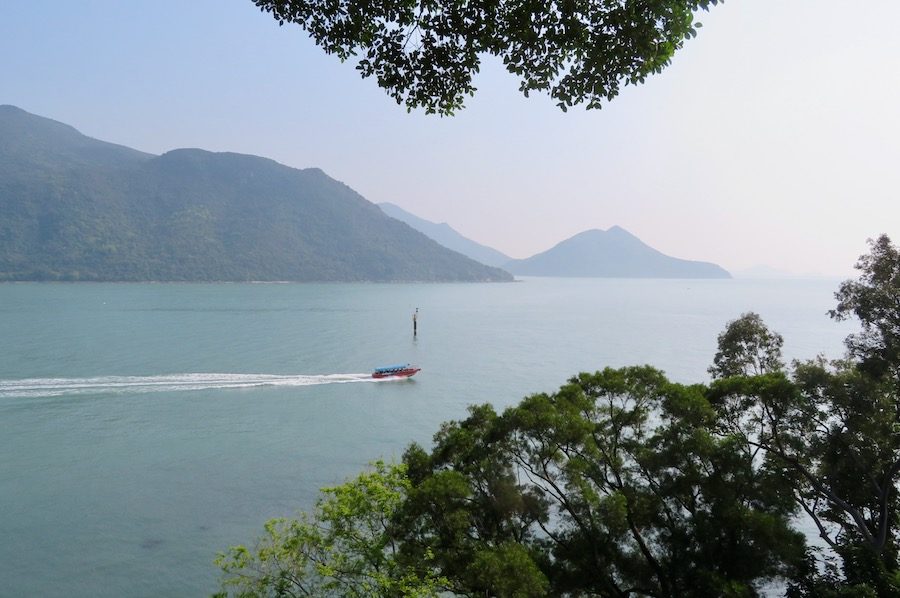
Stilt houses in Tai O
Stilt houses in Tai O
Stilt houses in Tai O
Normally bustling Tung Chung Station
Normally bustling Tung Chung Station
Normally bustling Tung Chung Station
Origami cranes, and Tai O housing
Origami cranes, and Tai O housing
Origami cranes, and Tai O housing
No sign of tourist hordes
No sign of tourist hordes
No sign of tourist hordes
The tide is out
The tide is out
The tide is out
The day's catch
The day's catch
The day's catch
Back and front of stilt house
Back and front of stilt house
Back and front of stilt house
Dried seafood shop
Dried seafood shop
Dried seafood shop
Stilt houses
Stilt houses
Stilt houses
Barely floating boat
Barely floating boat
Barely floating boat
Fisherman in his sampan
Fisherman in his sampan
Fisherman in his sampan
View across Tai O Bay
View across Tai O Bay
View across Tai O Bay
6) A Junk Ride to Stanley
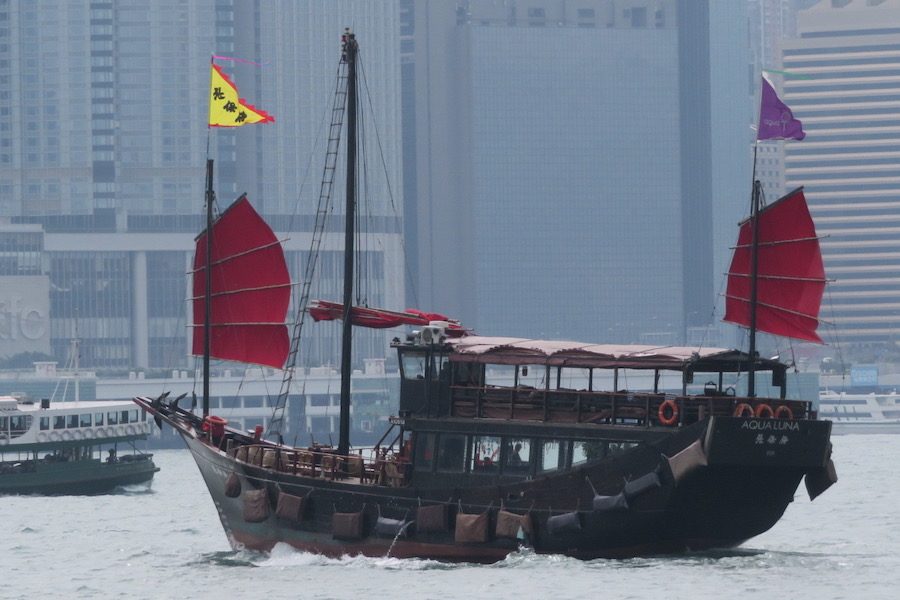
ONE of the easiest touristy things to do in Hong Kong is to take the junk ride from Central around to the pretty seaside town of Stanley. The voyage lasts 1.5 hours, and there’s nothing to do on board except sip a cool beer or soft drink while you watch the coastline bob up and down.
In happy times, the junk does the trip four times a week, but during our staycation with the protests still going on and the tourist numbers plummeting, there were only two sailings, on Saturday and Sunday.
We booked ahead, but there was no need on the Saturday we went. There were 13 of us on the top deck, which holds 50 people on its enormous daybed-type loungers. A few more sat on the lower deck, and a handful boarded in Tsim Sha Tsui, but that was it.
That suited me fine, and added to the soothing atmosphere, helped also by beautiful Chinese music being played softly throughout. The staff are friendly and helpful, and with a blue sky and blue sea, Hong Kong’s many islands drifted by.
The junk is called the AquaLuna and is a common sight around Hong Kong harbour. It was built a few years back with the help of an elderly craftsman, it’s made entirely of wood and bamboo, and no nails were used. The distinctive and traditional red sails look lovely, but in fact this junk is motorised.
It docks in Stanley at the equally distinguished-looking Blake Pier, which started life at the end of Pedder Street in Central and is named after Hong Kong’s 12th governor. If you’re doing the round trip, you now have two hours to get a bite to eat or wander around Stanley.
We opted for a one-way trip, for HK$295 each (US$37), so could stay in Stanley as long as we liked. We walked through Ma Hang Park and visited the Pei Ti temple with its fabulous views out to sea, then had pizza and a beer on the sea front.
We took a look at the famous Boat House, which is apparently due to be demolished soon to make way for a 10-storey hotel, and walked through a very quiet, if not almost comatose, Stanley Market, before catching a bus back to Central. The bus station, usually a scrum, was calm and peaceful and we both got seats for the whole journey, which is not normally the case. We were a long way from the protests, but the effect of them was obvious everywhere.
Verdict: One of the most soothing things to do in Hong Kong.
Top tip: Sail from Pier 9 on Hong Kong Island to nab the best seats before it loads up at Tsim Sha Tsui. – SB
Updated November 2, 2019
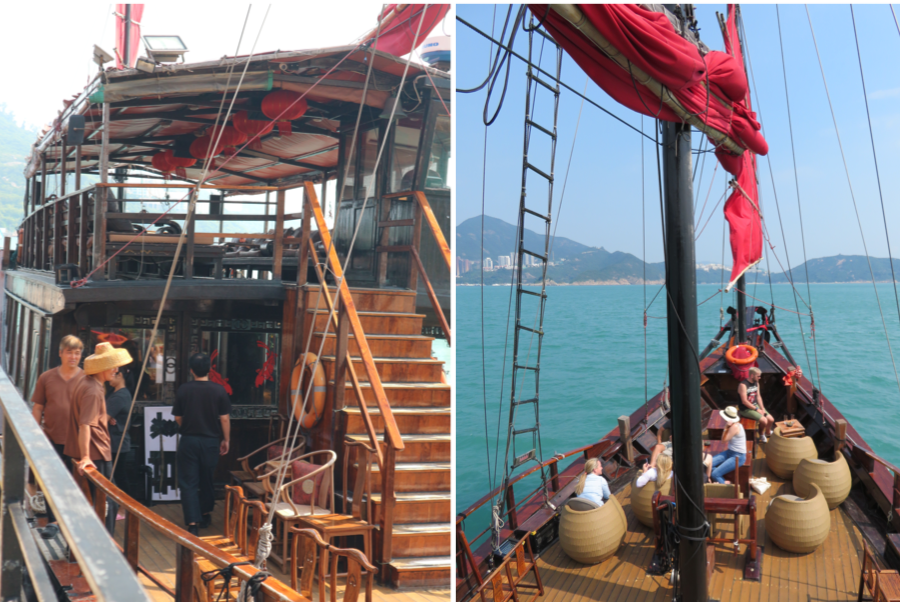
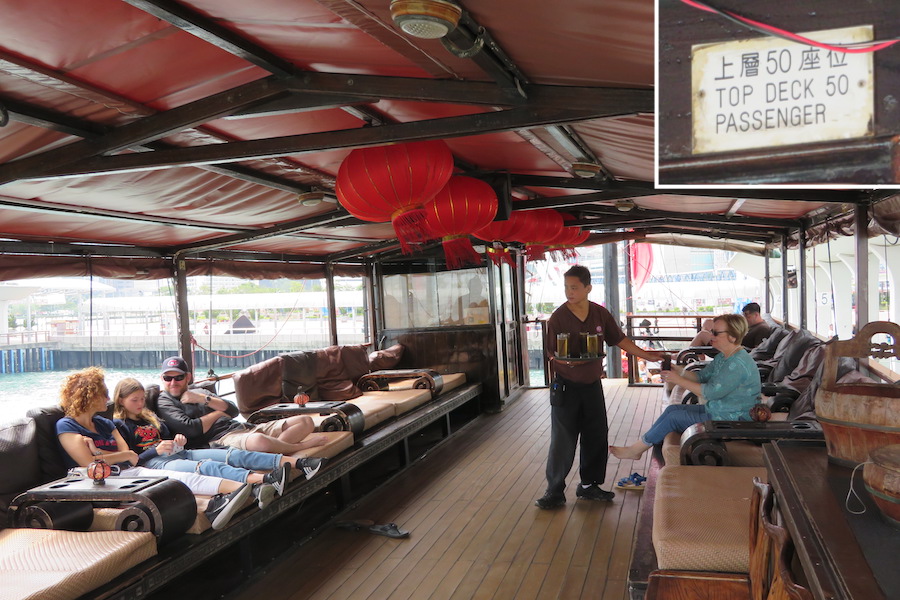

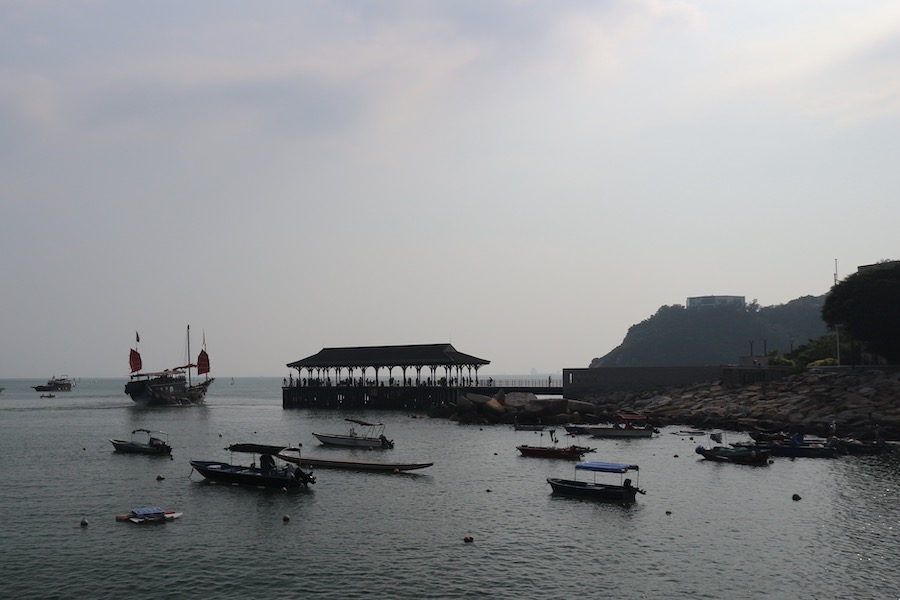
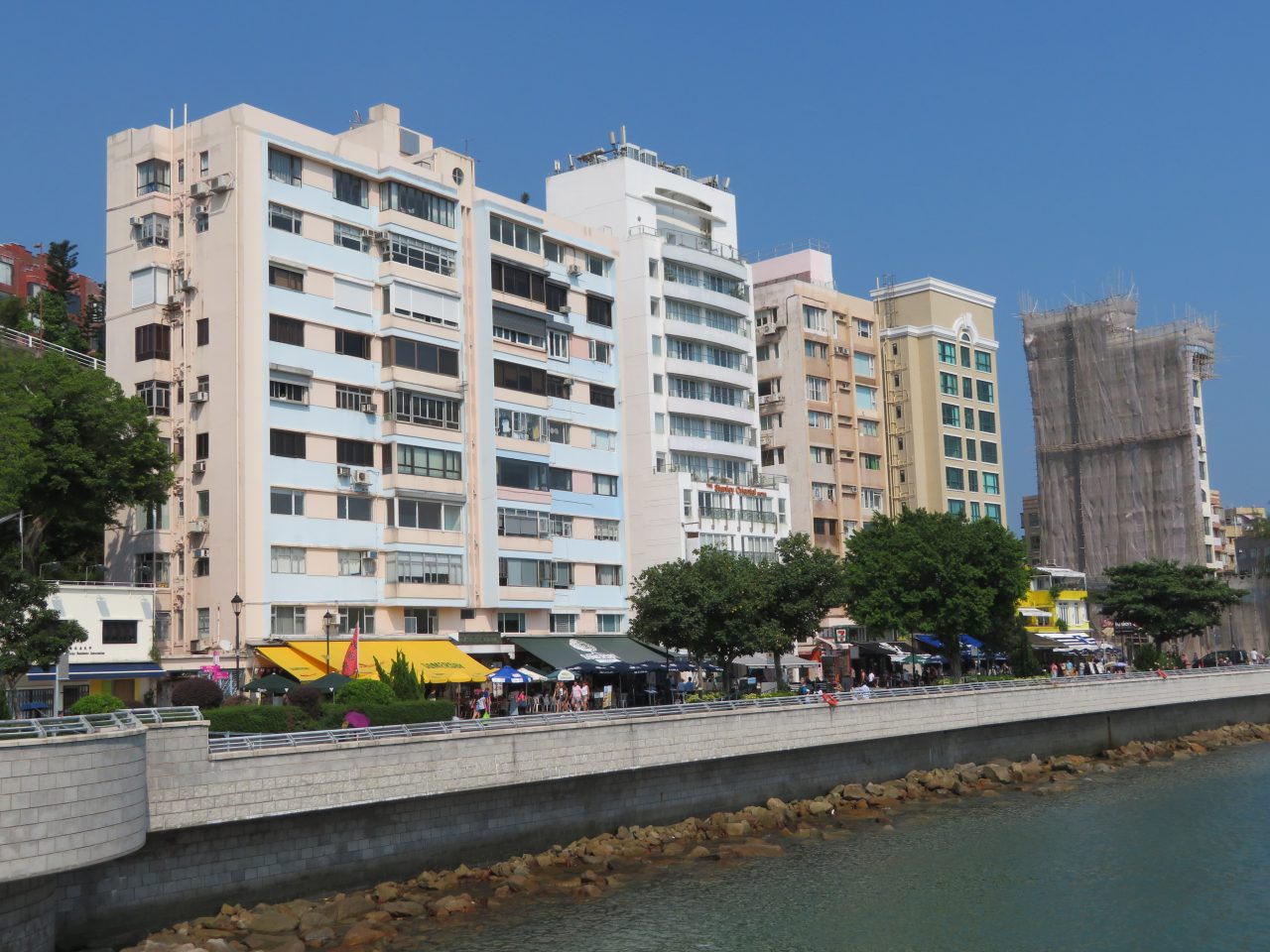
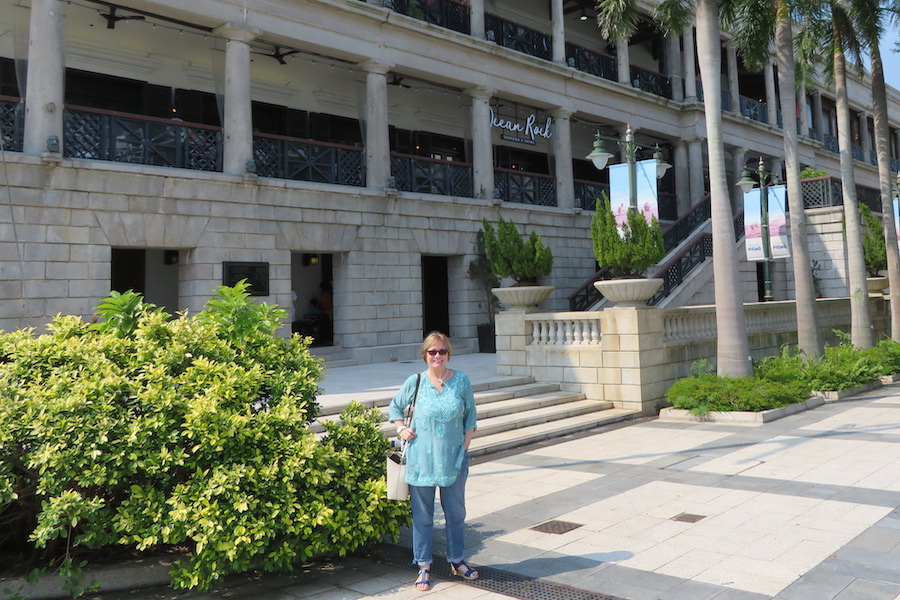
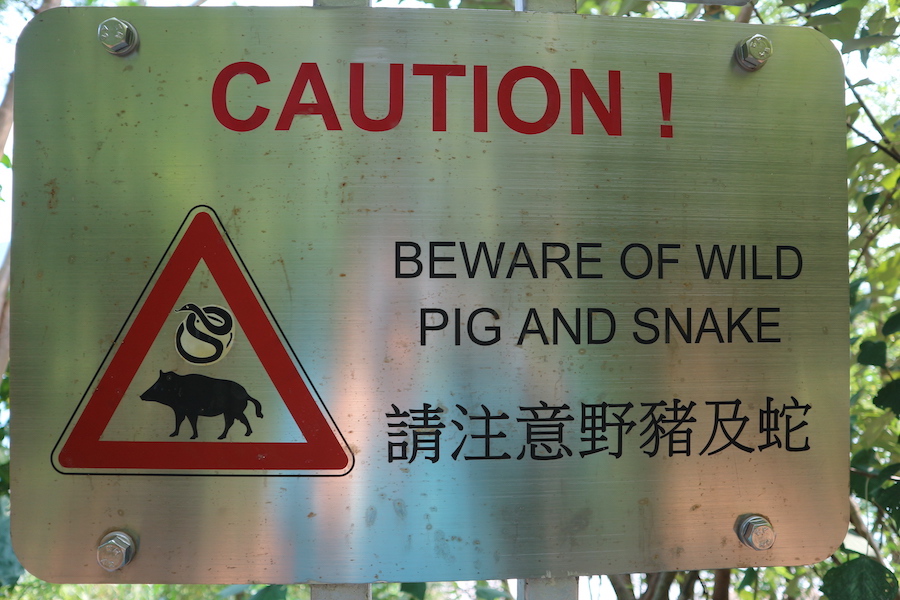
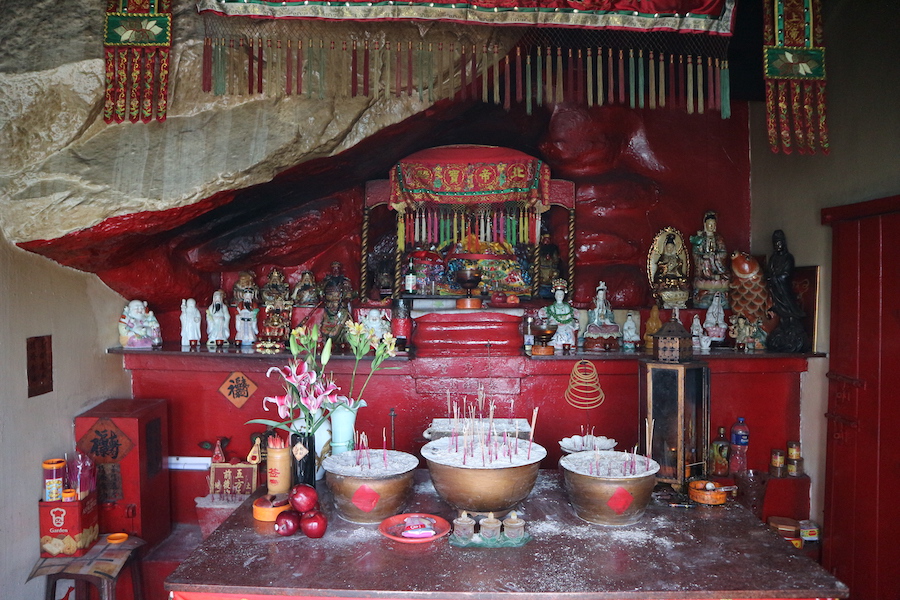
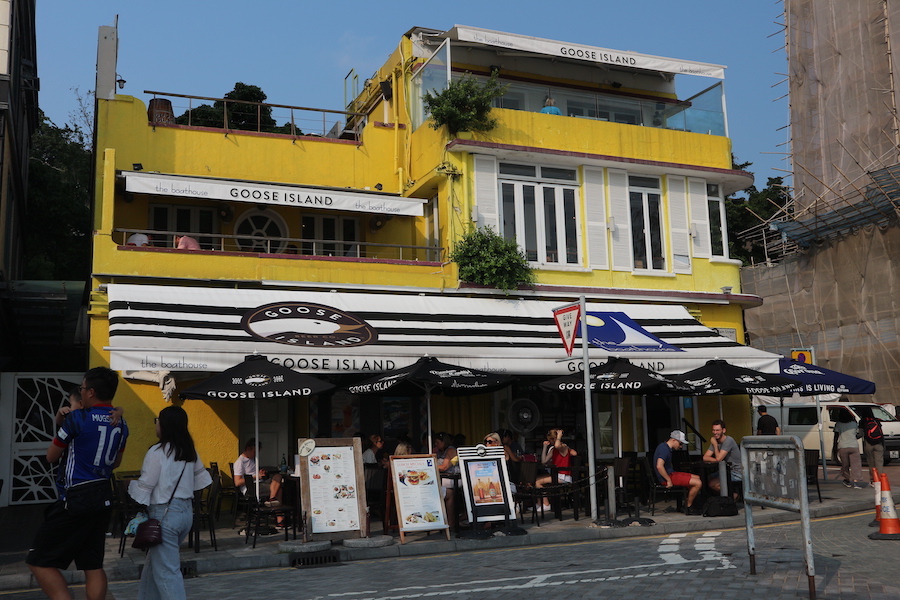

Friendly staff and open deck drinks
Not many onboard
Arriving at Stanley
Our junk sets off back to Central
Stanley sea front
Sue at Murray House
Ma Hang Park in Stanley
Temple by the sea
Boathouse is set to be demolished
Early democracy fighter, and timely T-shirt
7) A Saturday in Central
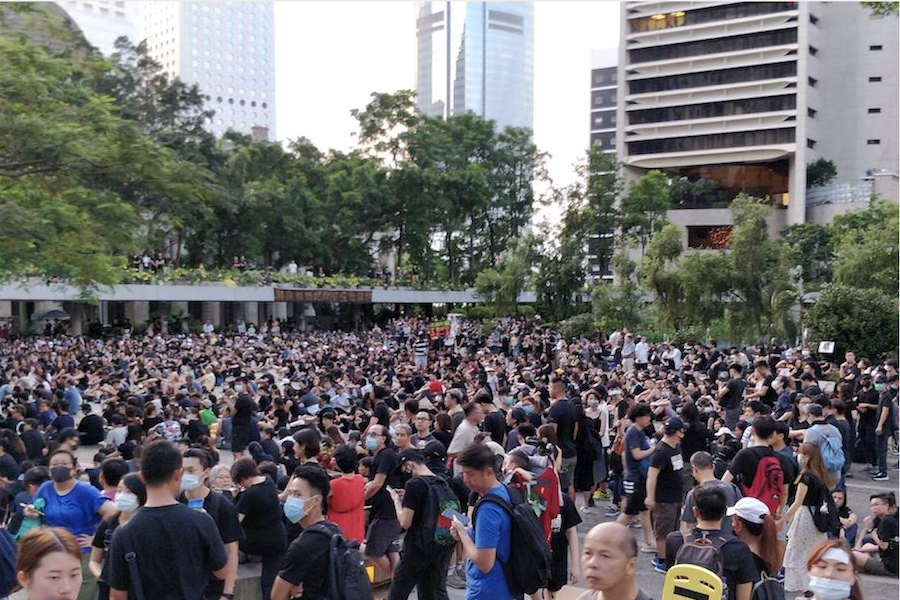
THIS was the simplest of our staycation days, and will be familiar to many who live in Hong Kong. An afternoon at the cinema, then supper and home. We chose a Saturday because these days most protest activity takes place at the weekends, and a lot of it has been in Central. In fact, last night (Nov. 2) was a gamechanger, with upwards of 12 hours of violence and mayhem across Hong Kong, both sides of the harbour. Multiple arrests, tear gas, Molotov cocktails, two incendiary devices disabled, almost 20 injured – Central, the Western district, Nathan Road, Mong Kok, Prince Edward, Causeway Bay and Wan Chai were all affected, and all places where tourists would be on a Saturday night out.
Consequently, I am rewriting this because the original version, which emphasised how peaceful our day in Central was, would be misleading in the changed circumstances. However, back to our walk two Saturdays ago.
We live in the outlying islands, and our ferry brings us to Central Piers, so we walked along the harbour front and through Tamar Park, past the Legislative Council building, or LegCo, Hong Kong’s government complex. This had been trashed a few weeks earlier but had just been repaired, and was surrounded by barricades. There were still protest signs painted onto the walkways, but graffiti had been hastily removed, leaving splodges of grey everywhere, and posters torn down. This usually pristine complex looked tatty but not damaged.
Keep walking and you quickly come to Pacific Place in Admiralty, an upmarket backdrop to many local protest marches and flashpoints. Previously we’d watched the peaceful Two Million march from a bridge here, but that seems another lifetime ago. A week before our visit, the cinema we were heading for was evacuated when tear gas seeped into the building. From time to time, the main entrances have been shut and on our visit there was only one door open.
This is a world of Harvey Nicks, Kate Spade, and so on. You get the picture. We were there to see the National Theatre Live’s Antony and Cleopatra (brilliant, by the way) but long enough to have an interval. Checking our phones, we found petrol bombs had been thrown into an MTR station in Kowloon and there was serious violence and mayhem there later.
This was our first visit to Admiralty and Pacific Place for a long time without seeing any protests, and we hopped on a tram and went back to Central for a walk to The Globe, a gastropub favoured by expats that we visit a few times a year so Colin can drool over the pages and pages of beers it offers. It was eerily quiet walking through Central’s back streets, no one around anywhere. But the pub was packed because the Rugby World Cup was being shown live on big screens.
There’s been a lot of talk of an “expat bubble”, though the idea that anyone in Hong Kong could be oblivious to the protests seems unlikely – particularly as the MTR network, which most people rely on, has been badly affected and now imposes what many see as a curfew by shutting down early. But here, as the excited crowd watched yet another World Cup walkover, there was a glimpse of the old, pre-protests Hong Kong just having a good time. When we headed out, the streets again seemed quieter than normal on a Saturday night.
As I’m writing this, Central has witnessed two violent clashes in the past week, firstly on Halloween and, as mentioned above, last night. Roads were already being blocked off at 7pm when we were in Central on Halloween this past Thursday.
Verdict: The “be water” protests – smaller groups on the run – means it’s harder to predict where activity will spring up. This makes it difficult for me to recommend a break in Hong Kong right now. Staycation, yes, because if you live here, unless you’re hiding under a rock, there are protest schedules you can consult as a rough guide. But why would you want to spend your Saturday night out in Hong Kong holed up in your hotel?
Top tip: In peaceful times, take time to walk around Central, there’s lots to see apart from the shops. Hollywood Road is a must. – SB
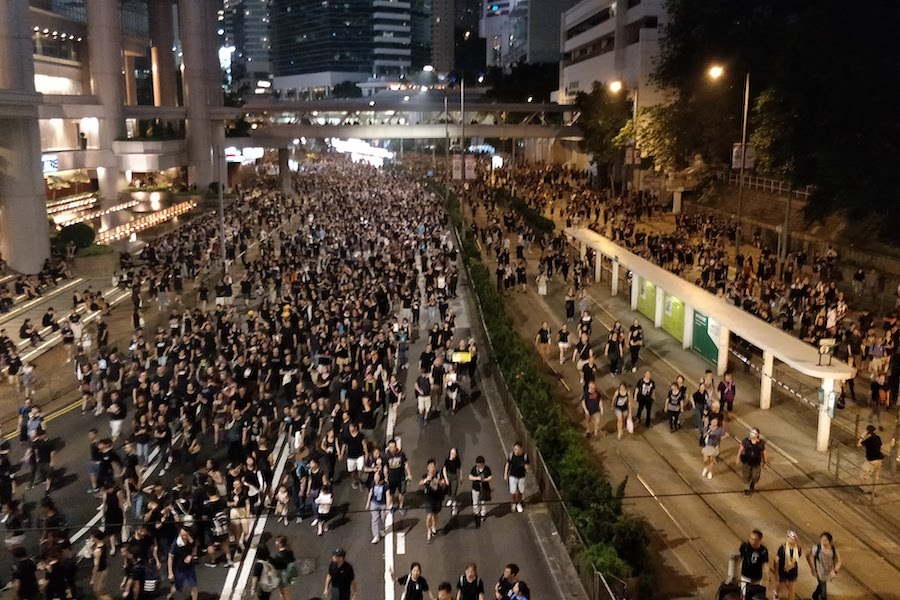
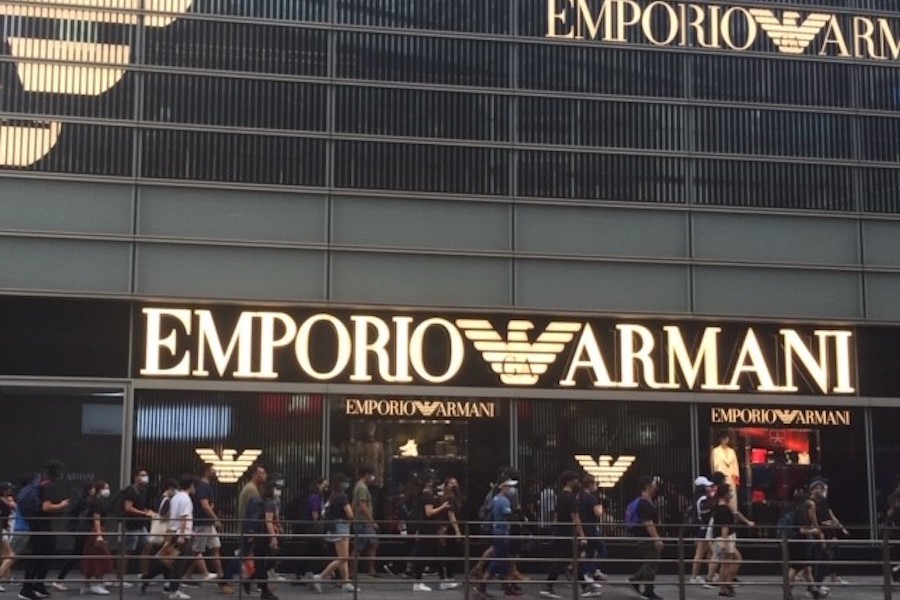
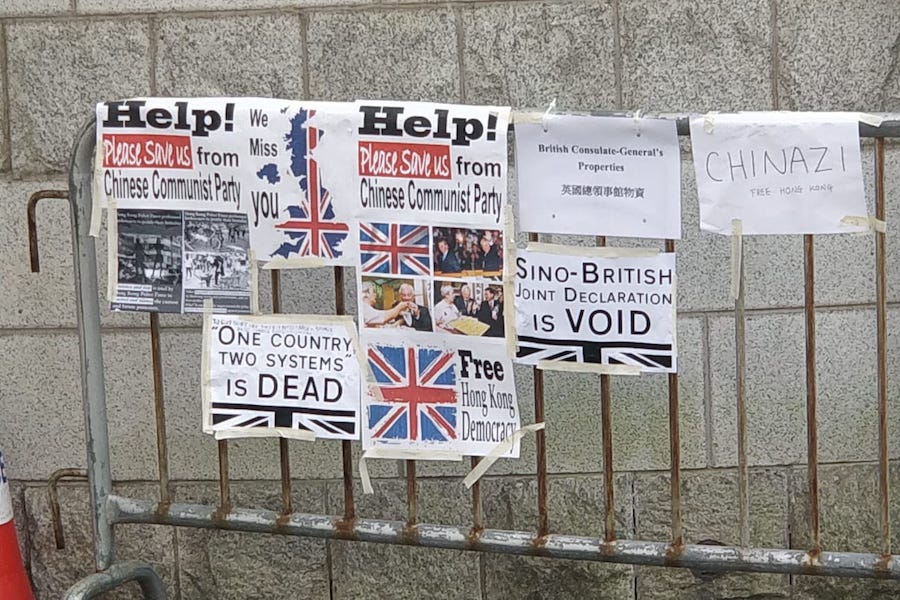
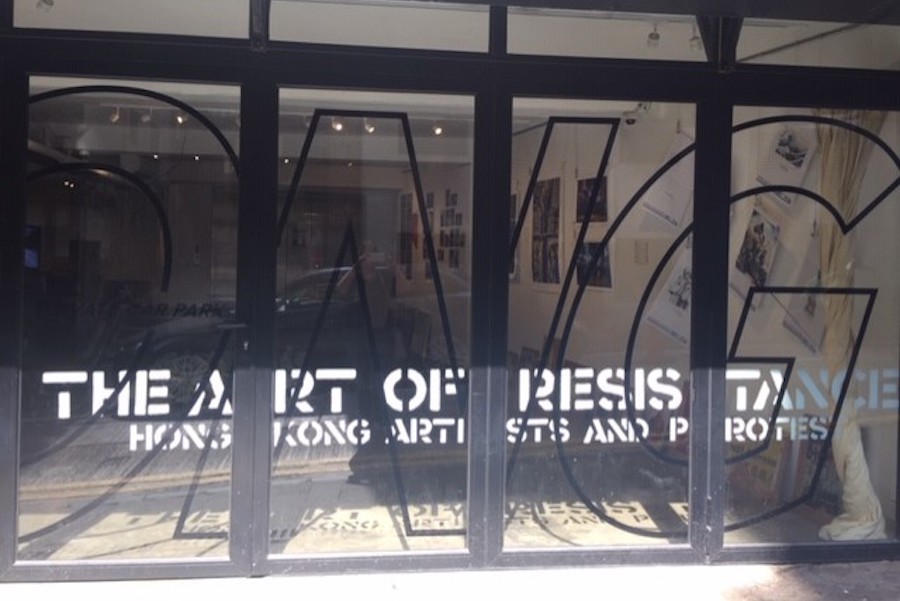
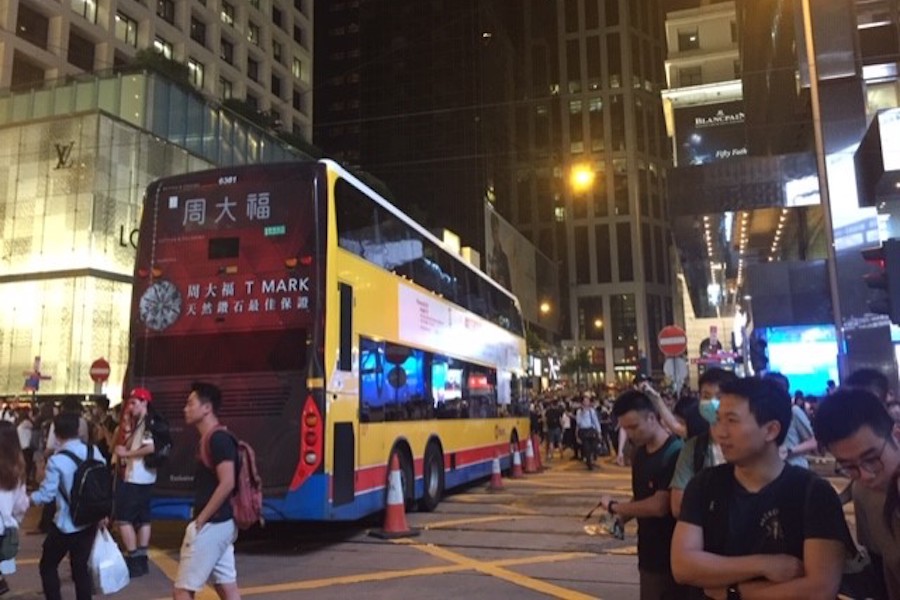
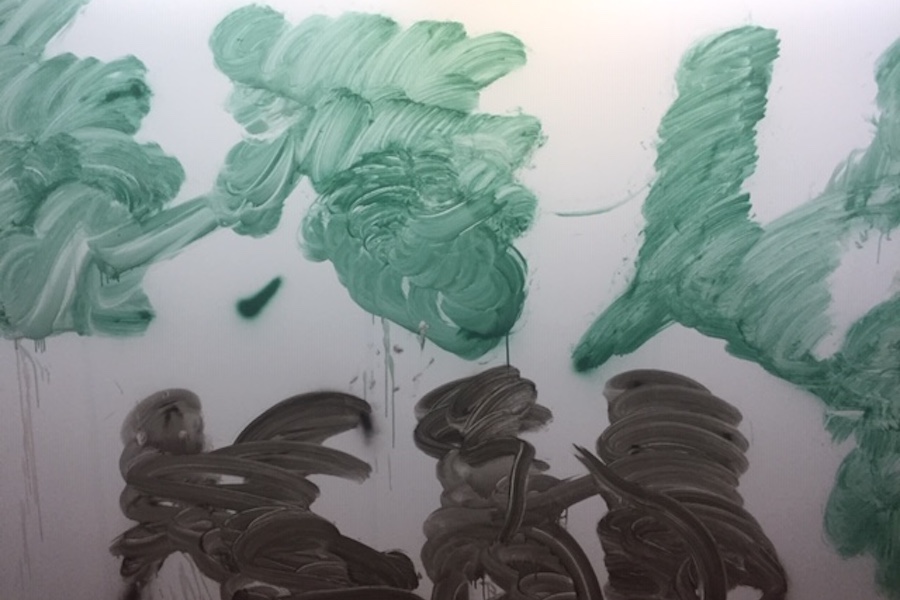

Marchers at Admiralty
Saturday marchers
Protest signs went up everywhere
Protest art gets its own pop-up gallery
A bus gets surrounded in Central
Graffiti hastily painted over in Admiralty
Marchers gather in Central, silent protest
Five Things We Learned From Our Staycation
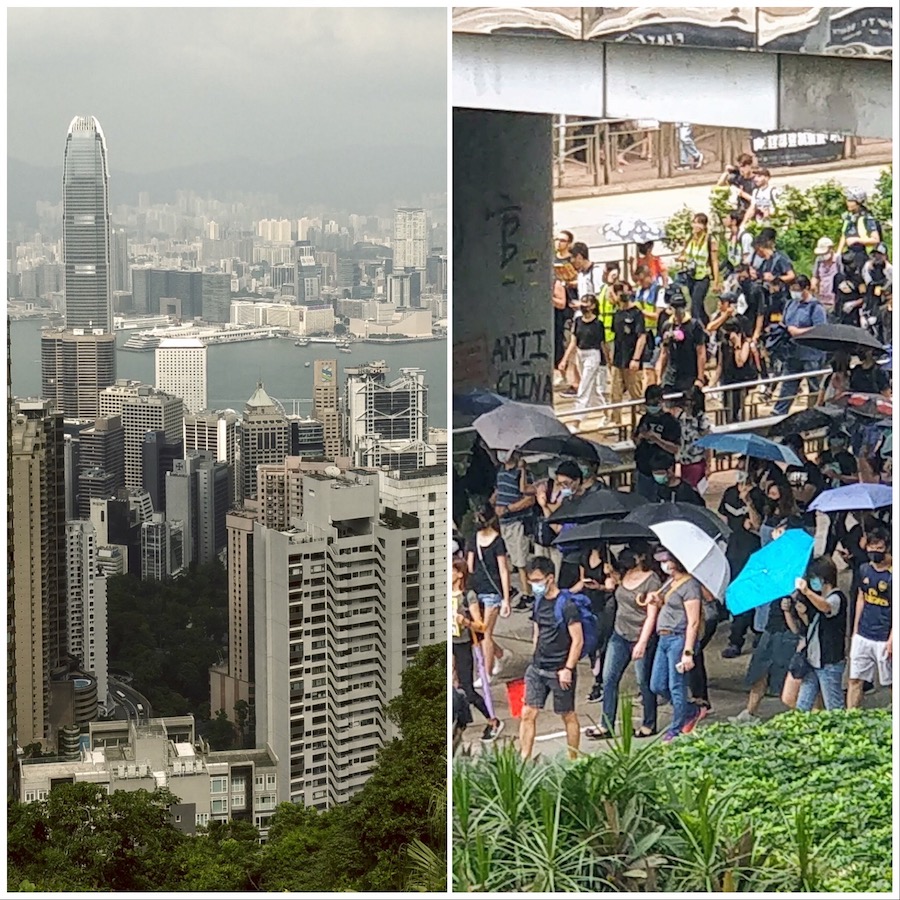 One thing became clear – everywhere we went, there were very few tourists. We have to admit this made our visits to popular attractions more pleasant than usual, though obviously we regret the circumstances. The Hong Kong Tourism Board last week published total visitor arrivals figures for September, which showed a 34 percent drop compared with the same month last year. From what we saw on the ground, we suspect the impact of the protests on the leisure tourism sector, as opposed to business travel and visits for family reasons, is greater than these numbers suggest.
One thing became clear – everywhere we went, there were very few tourists. We have to admit this made our visits to popular attractions more pleasant than usual, though obviously we regret the circumstances. The Hong Kong Tourism Board last week published total visitor arrivals figures for September, which showed a 34 percent drop compared with the same month last year. From what we saw on the ground, we suspect the impact of the protests on the leisure tourism sector, as opposed to business travel and visits for family reasons, is greater than these numbers suggest.- Hong Kong can be a surprisingly cheap place for sightseeing. Travelling on the extensive public transport networks is inexpensive, while admission fees are generally very low, and often free for young children and the over-60s. However, the protests have repeatedly caused extensive disruption, particularly to the MTR metro system.
- Our staycation reminded us how many great places and things to see there are in Hong Kong, and how diverse they are. Going forward, we’ll be having more days out.
- Some expats have been criticised for living in a so-called “bubble” – carrying on as before, oblivious to the protests. We did see some instances of this, mostly because our staycation clashed with the Rugby World Cup. One evening we were at a bar showing a match on some screens and live coverage of the violence happening just a few streets away on others. No one was watching the protests.
- We’ve long felt that Hong Kong is complacent when it comes to tourism, one of its four so-called “pillar” industries. There are only six tourist information offices in total, all but two at points of entry. How come there is no office to help tourists wandering around Central? Notable attractions are not promoted effectively – do many visitors know, for example, that Hong Kong has the world’s highest bar, Ozone at the Ritz-Carlton in Kowloon? Likewise, are they told about costly new cultural facilities such as the Xiqu Centre and Tai Kwun? The tourist board concentrates on pushing brand Hong Kong with slogans such as “Best of All It’s in Hong Kong”, which looks more ill-advised by the day. Perhaps now conditions are so much tougher there’ll be a much-needed rethink.
Updated January 2020
RELATED
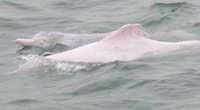 PINK DOLPHIN WATCHING: Another once-popular tourist attraction in Hong Kong that has been badly hit by the protests as the number of people taking part has plummeted. READ MORE
PINK DOLPHIN WATCHING: Another once-popular tourist attraction in Hong Kong that has been badly hit by the protests as the number of people taking part has plummeted. READ MORE
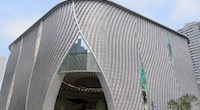 XIQU CENTRE: Futuristic Home for an Ancient Artform. Everything you need to know about this exciting new opera house, including details of performances where tea and dim sum is served. READ MORE
XIQU CENTRE: Futuristic Home for an Ancient Artform. Everything you need to know about this exciting new opera house, including details of performances where tea and dim sum is served. READ MORE
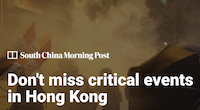 EXTENSIVE LOCAL COVERAGE of the protests is available online from the South China Morning Post and the Hong Kong Free Press.
EXTENSIVE LOCAL COVERAGE of the protests is available online from the South China Morning Post and the Hong Kong Free Press.
RECOMMENDED
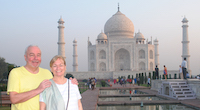 WELCOME TO OUR WORLD! Afaranwide’s home page – this is where you can find out about our latest posts and other highlights. READ MORE
WELCOME TO OUR WORLD! Afaranwide’s home page – this is where you can find out about our latest posts and other highlights. READ MORE
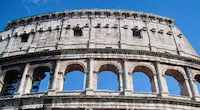 TOP 10 ATTRACTIONS: Many of the world’s most popular tourists sites are closed because of the coronavirus crisis, but you can still visit them virtually while you’re self-isolating. READ MORE
TOP 10 ATTRACTIONS: Many of the world’s most popular tourists sites are closed because of the coronavirus crisis, but you can still visit them virtually while you’re self-isolating. READ MORE
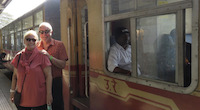 SHIMLA, QUEEN OF THE HILLS: Government officials once retreated to Shimla in the foothills of the Himalayas to escape India’s blazing hot summers. Now tourists make the same journey. READ MORE
SHIMLA, QUEEN OF THE HILLS: Government officials once retreated to Shimla in the foothills of the Himalayas to escape India’s blazing hot summers. Now tourists make the same journey. READ MORE
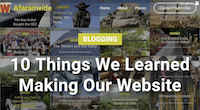 TEN THINGS WE LEARNED: Our up-to-the-minute guide to creating a website, one step at a time. The costs, the mistakes – it’s what we wish we’d known when we started blogging. READ MORE
TEN THINGS WE LEARNED: Our up-to-the-minute guide to creating a website, one step at a time. The costs, the mistakes – it’s what we wish we’d known when we started blogging. READ MORE
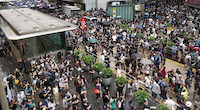 TROUBLED TIMES FOR EXPATS: Moving abroad can seem an idyllic prospect, but what happens when sudden upheavals or the inescapable realities of life intrude? READ MORE
TROUBLED TIMES FOR EXPATS: Moving abroad can seem an idyllic prospect, but what happens when sudden upheavals or the inescapable realities of life intrude? READ MORE
LET'S STAY IN TOUCH
Staycation in
a Battle Zone

COLIN SIMPSON and SUE BRATTLE
IN NORMAL times, this post would be called something like “7 Places You Simply Must See in Hong Kong”. But things have not been normal in the city since April, when large-scale protests against an extradition bill began.
The bill, which would have allowed extraditions to mainland China, has since been dropped. But the protests have continued as those involved pursue other demands.
Escalating levels of violence and destruction of property have created a sombre backdrop to life in what used to be a fun, buzzy place to live.
Tourist arrivals plummeted as the world watched endless news reports showing burning barricades, shops and train stations. Figures released yesterday by the Hong Kong Tourism Board show that total visitor arrivals in September were down 34 percent compared with the same month last year. The number coming from mainland China fell 35 percent, and hotels report a 50 percent drop in revenues. Tourism is one of four “pillar industries” that have driven Hong Kong’s economic growth.
We decided to see how all this was playing out on the ground by visiting a selection of popular tourist sites across the territory and reporting what we saw. So we had a week-long staycation – spending each night at our apartment and going out every day to be tourists.
The months of upheaval on the streets have affected many people’s mood – in the words of one expat we spoke to, Hong Kong has become “a sad city”. We also wanted to see if it was possible to get away from the protests and relax while remaining in Hong Kong.
Sustainable tourism has become a hot topic, and of course flight-free staycations are about as green as you can get. We travelled only by bus, ferry and – in one case – funicular railway during our week as tourists in our adopted home city.
Violence reached a new level this weekend as demonstrators clashed with police across Hong Kong for 12 hours.
We won’t be commenting on the issues that triggered the protests or the response of the authorities – this is a travel, not a politics, platform. We simply want to gauge the impact of these events on a cross-section of attractions on a city that is highly dependent on tourism.
1) Sunday Afternoon on the Peak

EVERY first-time tourist in Hong Kong makes a beeline for the Peak, the lofty viewpoint that offers spectacular views over Hong Kong Island and across Victoria Harbour to Kowloon. Since 1888, the best way to get there has been the Peak Tram, a funicular railway that speeds up the slope, through leafy forests, in seven minutes and offers tantalising glimpses of the city along the way.
Now the tram has become a striking example of how tourism has been hit by the protests. The service recently reopened after a major refurbishment, but before the closure – and the protests – two-hour queues to get on board in Central were standard. When we turned up on a Sunday in October, we walked straight on to the platform and waited just a couple of minutes to take our seats and start the ride.
Last month, protestors held a peaceful demonstration at the Peak, but when we arrived there was no sign of them. Nor was there any damage to buildings or graffiti, which you encounter in many parts of Hong Kong. We were not surprised to find that there weren’t many tourists, and the restaurants in the Peak’s two malls had loads of empty tables. (It’s Hong Kong, so there have to be malls – them’s the rules.)
Read MoreThe Peak has a wonderful natural location and the views are fabulous, but it has to be said that the concessions made to tourism have not done it many favours. When you get off the tram at the top you walk through a tacky gift shop stocked with garishly coloured items – key rings, nail clippers, panda toys – that were presumably meant for those missing mainland visitors. There’s an unappealing Madame Tussauds place, and the whole site is overdeveloped. At least the toilets have been upgraded.
After having a look around and paying an extortionate HK$120 (US$15.30) for two drippy, single-scoop ice creams, we headed off down one of our favourite walking routes, the Morning Trail. As we left we wondered what level of unrest would be needed for the law of supply and demand to impact greedy ice cream vendors.
The trail took us to Sai Ying Pun, a historical district to the west of the city where we used to live. It’s a sensitive area as it’s close to the liaison office that represents the Beijing central government and has been the focus of some protests. Nevertheless, SYP seemed its normal, messy self, and the only sign that things had changed was the presence of police patrols, each six strong with two officers carrying round riot shields. We had never seen these before, but they have been appearing on the streets across Hong Kong.
We walked back to Central via the terminal where ferries for the nearby gambling hub of Macau leave. This is often a crazily busy place packed with mainlanders, but this time it was quiet. The Starbucks was shut – a mainland company that’s hated by the protesters owns the franchise in Hong Kong.
Verdict: The Peak, for all the commercialisation and the sense of unease in the city, is always a great visit and, whisper it, the absence of crowds makes it even better.
Top tip: Don’t make the mistake of getting there, heading for the viewing platforms on top of the malls and then going straight back to Central. The walking trails are really great, so allow enough time to explore one of them and enjoy the clean air. – CS



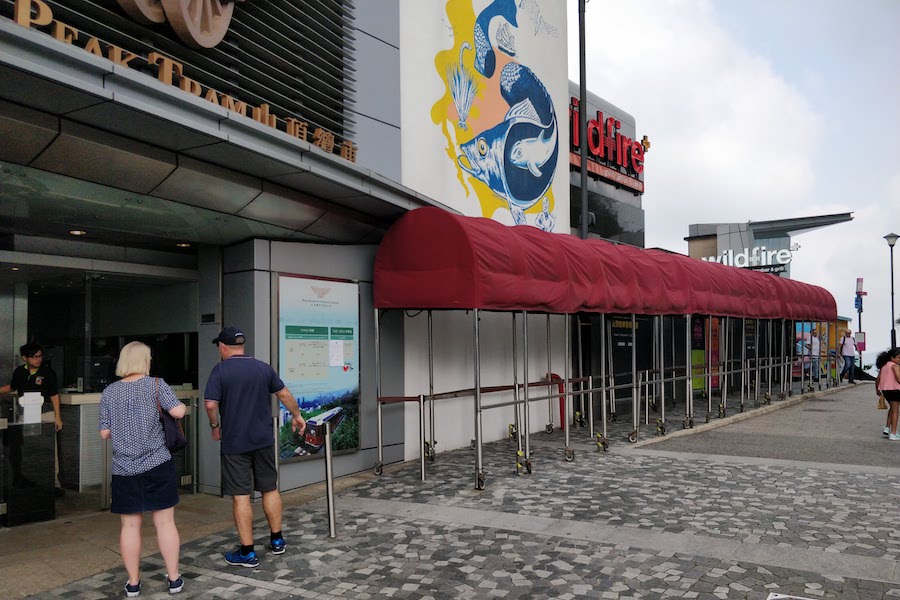








2) A Day Out in the Country

I LIKE everything about Kadoorie Farm and Botanic Garden, from its sense of tranquillity, the friendly staff, its ethics, the views… and it’s a really cheap day out.
It’s free if you’re under five or over 60, and HK$5 (64 US cents) for the 1.5 hour shuttle bus service that takes you all over the site and drops you off for short walks at points of interest. The highest-priced adult ticket is HK$30 (US$3.8), and once you’re in, you can stay all day to walk, gaze, or daydream.
Oh, there is one downside – it’s at Tai Po in the New Territories and for many it’s a trek to get there. For us it was three bus rides each way. However, the reward is that you’re really out in the countryside and have left urban Hong Kong well behind. Because the farm and garden are on a hill, once you’re at the top you can see clearly for miles around.
About the hill; that does mean, of course, that for a lot of the day you’re walking uphill, and it’s steep. With tourism down, there were only four people on our shuttle bus (there are four buses each day) but I imagine the bus struggles up the slopes when it is full. When you get off the bus, there are still usually steep paths or flights of steps to get anywhere, so be warned.
Read MoreIt’s an amazing story, told quite well in the modest farm museum which shares a roof with the farm shop and book shop. Again, everything from plants to fruit & veg are priced very low. I wished we had a car; I’d have stocked up on the many varieties of herb plants on offer at HK$10-20 each.
However, for me there were two highlights. First, the rescued raptors, which have a home for life if they need it. So an enormous owl that can’t fly, and a black kite with cataracts in both eyes are safe and cared for. There’s a snake hand-in point as well, and they get looked after if needed.
My other favourite was the wildlife pond. That may not sound exciting, but was a perfectly peaceful spot where I sat for a while spotting some of the 158 species of dragonflies flitting across the water and sunning themselves. Lovely.
There’s a small café (cheap, of course) which makes good coffee, refreshing teas and jolly nice muffins, along with other things. And the bus stops right outside the entrance gate.
Verdict: Dirt cheap day out and you really can get away from it all.
Top tips: Check your bus routes; they don’t necessarily use the same roads in both directions, so we had to do some quick map-reading in Tai Po to catch our connection. Wear sturdy walking shoes.
Postscript: No one in Hong Kong remains untouched by the protests. The Kadoorie family is the biggest shareholder in the company that owns the Peninsula hotel chain. When protestors and police clashed outside the flagship property in Kowloon on Sunday, the hotel opened its doors to help people affected by tear gas. – SB








3) A Night at Happy Valley Races

THE phrase “it’s an institution” is pretty overused by travel writers. Often it’s trotted out when the author is too lazy to think of something else. A bar that’s been open a few years, for example, is described as “a Dubai (or wherever) institution”.
When it comes to horse racing in Hong Kong, though, now that really IS an institution. The first race meeting in Hong Kong took place at Happy Valley in 1846 – just four years after the territory was ceded to Britain by China. The Hong Kong Jockey Club, which today runs the sport as a monopoly, was formed in 1884.
Racing has become phenomenally popular and generates huge amounts of money, with the club giving large sums to charitable causes – HK$4.3 billion (US$545 million) in 2018-19.
The Wednesday night meetings at Happy Valley Racecourse on Hong Kong Island are a magnet for locals, expats and tourists. Companies with offices in the city regularly welcome colleagues from branches across Asia and beyond who look forward to a night at the races.
A typical meeting sees HK$1.1 billion gambled, with HK$115 million going to the government in tax and the club retaining HK$52 million for costs and donations.
Yet even this much-loved part of Hong Kong life has not escaped the fallout from the protests. A Happy Valley meeting due to take place on Sept. 18 was cancelled over fears of disruption. This was because a horse owned by a pro-Beijing lawmaker disliked by the demonstrators had been due to run.
Meanwhile, the annual Sunday meeting at Happy Valley which was due to take place on Oct. 27 was switched to Hong Kong’s other racecourse, Sha Tin in the New Territories, because of fears that protests would cause disruption.
The Happy Valley course, with its bank of seven-storey stands, can hold 55,000 spectators. We went there a couple of weeks ago, a fortnight after Sha Tin attracted its lowest attendance for a weekend meeting in years. Transport disruption caused by the protests and the general chaos in the city were blamed.
We were curious to see for ourselves how racing was faring amid the continuing turmoil. Our taxi took us through Causeway Bay, an upscale shopping district that has been a focus for clashes.
When we arrived the course was quiet, and we wondered whether the Sha Tin experience would be repeated. I took a photo, looking down from the grandstand, of some of many empty seats.
Gradually, however, the numbers increased and the atmosphere warmed up. People in Hong Kong work unhealthily long hours, so perhaps it was just that some had not been able to get away from the office in time for the first race.
The racecourse is a fabulous facility. Everything is smart, bright, clean and comfortable, and the night-time outlook over the floodlit turf course to the towers beyond is striking. The only downside was that we were there during the Oktoberfest celebrations, so there was an oompah band.
As the night wore on, fortified by the odd win and each-way success, we began to really enjoy ourselves, as everyone else seemed to be doing. A foray to the beer garden gave a welcome glimpse of the old Hong Kong – work hard, play hard and may the Devil take the hangover. It was great to see groups of lively, noisy people laughing, drinking and having a good time.
There has been much talk of a so-called expat bubble, of well-paid office workers from abroad continuing with their lives as if the protests weren’t happening.
I don’t buy this, as I don’t see how anyone could remain oblivious when, for example, the metro system most people rely on has been so heavily disrupted. I didn’t see a bubble at Happy Valley, just young people enjoying a fun night out that they probably felt they needed.
Besides, the racing is not just an expat party. There were many serious-looking older Hongkongers with racing papers, form guides and multiple phones.
The Sha Tin course is very much set up for the locals. It doesn’t come close to Happy Valley, though, for sheer excitement, fun and charisma.
Verdict: The old Hong Kong spirit survives at Happy Valley.
Top tip: The second floor terrace in the grandstand is a great place to watch the racing from. It costs just HK$20 to get in and you have a reserved seat, so you can head for the beer garden or check out the parade ring, then go back to the terrace. – CS










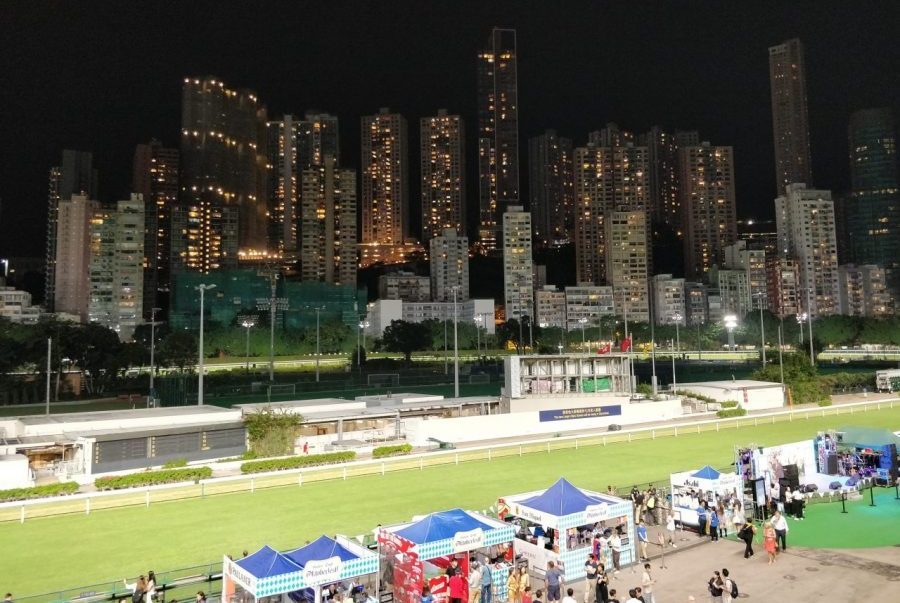
4) A Walk Along Nathan Road

WE TOOK this two-mile stroll on Thursday, October 17. The date is important because three days later violence broke out here during a Sunday protest, with pepper spray, petrol bombs, water cannon firing blue dye, shops, banks and restaurants trashed and multiple arrests.
It’s a good example of what Colin and I wanted to do with our Staycation series. In times of unrest, things turn on a sixpence, but although the events of Sunday saddened both of us, our brief here is: Is it possible to have a holiday in Hong Kong despite the protests?
And on that Thursday we had a civilised walk in Kowloon from the wonderful Star Ferry pier to the markets in Mong Kok up to Prince Edward, the northern end of Nathan Road. In one walk you can see much of what makes Hong Kong so vibrant. Starting with posh shops (which I find bland and boring) you quickly reach delights such as Kowloon Mosque, St Andrew’s Church, and Kowloon Park.
You can go inside the mosque, unlike many I’ve known, and half an hour’s quiet contemplation in St Andrew’s makes a nice break, too. Kowloon Park has a weird yet wonderful walk of cartoon fame, with great statues.
Keep going and the atmosphere and look of the road changes. The road is still straight and quite busy, but the shops, apartment blocks, and hotels change as you approach the large Tin Hau Temple. You might like to make a diversion here to Shanghai Street just for a look, or stay on Nathan Road till you reach Mong Kok. You’re now in street market central.
If your shopping gene is going to kick in anywhere, it will be here. Just a short-ish walk from Tiffany’s near the start of the road, here you can buy endless knock-off handbags, pashminasand watches in the Temple Street night market (the first one you come to) and the Ladies Market (both of which to be honest I thought were disappointing); visit Goldfish Market and Flower Market; or, my favourite, go to Sneaker Street where everyone’s sneaker of choice is for sale in branded shops at quite decent prices. Maybe the markets have been hit by the protests. There was hardly anyone around, although things perked up in Sneaker Street, and it was really noticeable that the stock was the same on stall after stall.
However, this is the part of Nathan Road that’s awash with colourful apartment blocks, unusual little shops and side streets, and the Hong Kong I prefer. The high-end shopping malls sap my energy, but the buzzy street life is energising and, if you’re a tourist, there’s a photo opportunity everywhere you look.
So that’s our walk, a simple afternoon/evening out. Cheap, too, if you eat at one of the zillion food stalls and don’t go mad for sneakers. There was protest-related damage almost the entire length of the street, with MTR signs defaced, Chinese-owned banks and shops boarded up, and probably thousands of posters everywhere. As I said, a few days later things got a lot worse. But did we ever feel in any danger? No.
Verdict: Despite everything, something I’d recommend to every visitor and resident.
Top tip: if you do veer off to Shanghai Street you’re only a stone’s throw from the Xiqu Centre, the city’s fab new opera house, well worth a look. – SB












5) A Trip to Tai O

UNTIL a little while ago, if you said “Hong Kong” to someone then it’s likely the first image that would spring into their mind would be the iconic cityscape. That’s what defined the city – gleaming towers soaring skywards on both sides of Victoria Harbour.
Now, six months after the start of the anti-government protests, they would be more likely to think of burning metro stations, billowing teargas and violent clashes.
That old image of Hong Kong was misleading, though – there was always a lot more to it than skyscrapers.
Much of the territory is made up of country parks, and there are plenty of fine beaches. Then there are traditional fishing villages such as Tai O on the western edge of Lantau Island. All of these were good options when you needed a break from the frantic pace of city life.
This is more important than ever in the current difficult times. We wanted to get away from the constant reminders of the showdowns between protesters and police – the graffiti in normally pristine Central, the endless news coverage. So we decided to head off to Tai O.
Our plan didn’t start well, however. When we got to Tung Chung on our way there we found the metro station half shut because of damage caused during protests, and anti-government posters and fliers plastered everywhere.
But once we reached Tai O the only protest-related items we saw were a few of the origami cranes made by some demonstrators to promote peaceful resistance. They had been placed on a post in the centre of the village.
Not that Tai O remained untouched. A day out there has always been popular with tourists who want to see a slower, simpler, more traditional side of Hong Kong life. They came to wander through the small village with its waterways and dried seafood shops, go on short boat trips in the hope of seeing pink dolphins, and gaze up at the surrounding hills. At weekends, the narrow streets were often overwhelmed with visitors.
This time, however, we saw hardly any tourists. The dolphin boats were still going out, but with only a few people on board. And the restaurant at the Tai O Heritage Hotel, where we went for lunch, had only a handful of guests.
The hotel, a converted marine police station, has a commanding view of the bay on which Tai O stands – all the better for keeping an eye out for the smugglers who used to frequent these waters. Beyond the bay is the South China Sea, and further out, over the horizon, is mainland China. Each of the hotel rooms has a plate by the door explaining what it was originally used for.
Many of the villagers are Tankas, boat people who traditionally lived on junks. At Tai O, they have stilt houses that protrude from the shore over the water and use flat-bottomed boats known as sampans. Some make shrimp paste to sell to tourists, though personally I find its sludgy brown appearance unappealing. The village itself can look a bit sludgy when the tide is out and the muddy foreshore exposed.
We enjoyed our visit to Tai O, though. The fanciful description of it as the “Venice of the Orient” is ridiculously exaggerated, but it does have a special charm and a welcome balming effect.
Verdict: Yes, it really is possible to get right away from the protests.
Top tip: If you’re going by ferry make sure you check the times in advance, or you might find yourself waiting for hours. You can also get there by bus. – CS












6) A Junk Ride to Stanley

ONE of the easiest touristy things to do in Hong Kong is to take the junk ride from Central around to the pretty seaside town of Stanley. The voyage lasts 1.5 hours, and there’s nothing to do on board except sip a cool beer or soft drink while you watch the coastline bob up and down.
In happy times, the junk does the trip four times a week, but during our staycation with the protests still going on and the tourist numbers plummeting, there were only two sailings, on Saturday and Sunday.
We booked ahead, but there was no need on the Saturday we went. There were 13 of us on the top deck, which holds 50 people on its enormous daybed-type loungers. A few more sat on the lower deck, and a handful boarded in Tsim Sha Tsui, but that was it.
That suited me fine, and added to the soothing atmosphere, helped also by beautiful Chinese music being played softly throughout. The staff are friendly and helpful, and with a blue sky and blue sea, Hong Kong’s many islands drifted by.
The junk is called the AquaLuna and is a common sight around Hong Kong harbour. It was built a few years back with the help of an elderly craftsman, it’s made entirely of wood and bamboo, and no nails were used. The distinctive and traditional red sails look lovely, but in fact this junk is motorised.
It docks in Stanley at the equally distinguished-looking Blake Pier, which started life at the end of Pedder Street in Central and is named after Hong Kong’s 12th governor. If you’re doing the round trip, you now have two hours to get a bite to eat or wander around Stanley.
We opted for a one-way trip, for HK$295 each (US$37), so could stay in Stanley as long as we liked. We walked through Ma Hang Park and visited the Pei Ti temple with its fabulous views out to sea, then had pizza and a beer on the sea front.
We took a look at the famous Boat House, which is apparently due to be demolished soon to make way for a 10-storey hotel, and walked through a very quiet, if not almost comatose, Stanley Market, before catching a bus back to Central. The bus station, usually a scrum, was calm and peaceful and we both got seats for the whole journey, which is not normally the case. We were a long way from the protests, but the effect of them was obvious everywhere.
Verdict: One of the most soothing things to do in Hong Kong.
Top tip: Sail from Pier 9 on Hong Kong Island to nab the best seats before it loads up at Tsim Sha Tsui. – SB
Updated November 2, 2019










7) A Saturday in Central

THIS was the simplest of our staycation days, and will be familiar to many who live in Hong Kong. An afternoon at the cinema, then supper and home. We chose a Saturday because these days most protest activity takes place at the weekends, and a lot of it has been in Central. In fact, last night (Nov. 2) was a gamechanger, with upwards of 12 hours of violence and mayhem across Hong Kong, both sides of the harbour. Multiple arrests, tear gas, Molotov cocktails, two incendiary devices disabled, almost 20 injured – Central, the Western district, Nathan Road, Mong Kok, Prince Edward, Causeway Bay and Wan Chai were all affected, and all places where tourists would be on a Saturday night out.
Consequently, I am rewriting this because the original version, which emphasised how peaceful our day in Central was, would be misleading in the changed circumstances. However, back to our walk two Saturdays ago.
We live in the outlying islands, and our ferry brings us to Central Piers, so we walked along the harbour front and through Tamar Park, past the Legislative Council building, or LegCo, Hong Kong’s government complex. This had been trashed a few weeks earlier but had just been repaired, and was surrounded by barricades. There were still protest signs painted onto the walkways, but graffiti had been hastily removed, leaving splodges of grey everywhere, and posters torn down. This usually pristine complex looked tatty but not damaged.
Keep walking and you quickly come to Pacific Place in Admiralty, an upmarket backdrop to many local protest marches and flashpoints. Previously we’d watched the peaceful Two Million march from a bridge here, but that seems another lifetime ago. A week before our visit, the cinema we were heading for was evacuated when tear gas seeped into the building. From time to time, the main entrances have been shut and on our visit there was only one door open.
This is a world of Harvey Nicks, Kate Spade, and so on. You get the picture. We were there to see the National Theatre Live’s Antony and Cleopatra (brilliant, by the way) but long enough to have an interval. Checking our phones, we found petrol bombs had been thrown into an MTR station in Kowloon and there was serious violence and mayhem there later.
This was our first visit to Admiralty and Pacific Place for a long time without seeing any protests, and we hopped on a tram and went back to Central for a walk to The Globe, a gastropub favoured by expats that we visit a few times a year so Colin can drool over the pages and pages of beers it offers. It was eerily quiet walking through Central’s back streets, no one around anywhere. But the pub was packed because the Rugby World Cup was being shown live on big screens.
There’s been a lot of talk of an “expat bubble”, though the idea that anyone in Hong Kong could be oblivious to the protests seems unlikely – particularly as the MTR network, which most people rely on, has been badly affected and now imposes what many see as a curfew by shutting down early. But here, as the excited crowd watched yet another World Cup walkover, there was a glimpse of the old, pre-protests Hong Kong just having a good time. When we headed out, the streets again seemed quieter than normal on a Saturday night.
As I’m writing this, Central has witnessed two violent clashes in the past week, firstly on Halloween and, as mentioned above, last night. Roads were already being blocked off at 7pm when we were in Central on Halloween this past Thursday.
Verdict: The “be water” protests – smaller groups on the run – means it’s harder to predict where activity will spring up. This makes it difficult for me to recommend a break in Hong Kong right now. Staycation, yes, because if you live here, unless you’re hiding under a rock, there are protest schedules you can consult as a rough guide. But why would you want to spend your Saturday night out in Hong Kong holed up in your hotel?
Top tip: In peaceful times, take time to walk around Central, there’s lots to see apart from the shops. Hollywood Road is a must. – SB







Five Things We Learned From Our Staycation
 One thing became clear – everywhere we went, there were very few tourists. We have to admit this made our visits to popular attractions more pleasant than usual, though obviously we regret the circumstances. The Hong Kong Tourism Board last week published total visitor arrivals figures for September, which showed a 34 percent drop compared with the same month last year. From what we saw on the ground, we suspect the impact of the protests on the leisure tourism sector, as opposed to business travel and visits for family reasons, is greater than these numbers suggest.
One thing became clear – everywhere we went, there were very few tourists. We have to admit this made our visits to popular attractions more pleasant than usual, though obviously we regret the circumstances. The Hong Kong Tourism Board last week published total visitor arrivals figures for September, which showed a 34 percent drop compared with the same month last year. From what we saw on the ground, we suspect the impact of the protests on the leisure tourism sector, as opposed to business travel and visits for family reasons, is greater than these numbers suggest.- Hong Kong can be a surprisingly cheap place for sightseeing. Travelling on the extensive public transport networks is inexpensive, while admission fees are generally very low, and often free for young children and the over-60s. However, the protests have repeatedly caused extensive disruption, particularly to the MTR metro system.
- Our staycation reminded us how many great places and things to see there are in Hong Kong, and how diverse they are. Going forward, we’ll be having more days out.
- Some expats have been criticised for living in a so-called “bubble” – carrying on as before, oblivious to the protests. We did see some instances of this, mostly because our staycation clashed with the Rugby World Cup. One evening we were at a bar showing a match on some screens and live coverage of the violence happening just a few streets away on others. No one was watching the protests.
- We’ve long felt that Hong Kong is complacent when it comes to tourism, one of its four so-called “pillar” industries. There are only six tourist information offices in total, all but two at points of entry. How come there is no office to help tourists wandering around Central? Notable attractions are not promoted effectively – do many visitors know, for example, that Hong Kong has the world’s highest bar, Ozone at the Ritz-Carlton in Kowloon? Likewise, are they told about costly new cultural facilities such as the Xiqu Centre and Tai Kwun? The tourist board concentrates on pushing brand Hong Kong with slogans such as “Best of All It’s in Hong Kong”, which looks more ill-advised by the day. Perhaps now conditions are so much tougher there’ll be a much-needed rethink.
Updated January 2020
RELATED
 PINK DOLPHIN WATCHING: Another once-popular tourist attraction in Hong Kong that has been badly hit by the protests as the number of people taking part has plummeted. READ MORE
PINK DOLPHIN WATCHING: Another once-popular tourist attraction in Hong Kong that has been badly hit by the protests as the number of people taking part has plummeted. READ MORE
 XIQU CENTRE: Futuristic Home for an Ancient Artform. Everything you need to know about this exciting new opera house, including details of performances where tea and dim sum is served. READ MORE
XIQU CENTRE: Futuristic Home for an Ancient Artform. Everything you need to know about this exciting new opera house, including details of performances where tea and dim sum is served. READ MORE
 EXTENSIVE LOCAL COVERAGE of the protests is available online from the South China Morning Post and the Hong Kong Free Press.
EXTENSIVE LOCAL COVERAGE of the protests is available online from the South China Morning Post and the Hong Kong Free Press.
RECOMMENDED
 WELCOME TO OUR WORLD! Afaranwide’s home page – this is where you can find out about our latest posts and other highlights. READ MORE
WELCOME TO OUR WORLD! Afaranwide’s home page – this is where you can find out about our latest posts and other highlights. READ MORE
 TOP 10 ATTRACTIONS: Many of the world’s most popular tourists sites are closed because of the coronavirus crisis, but you can still visit them virtually while you’re self-isolating. READ MORE
TOP 10 ATTRACTIONS: Many of the world’s most popular tourists sites are closed because of the coronavirus crisis, but you can still visit them virtually while you’re self-isolating. READ MORE
 SHIMLA, QUEEN OF THE HILLS: Government officials once retreated to Shimla in the foothills of the Himalayas to escape India’s blazing hot summers. Now tourists make the same journey. READ MORE
SHIMLA, QUEEN OF THE HILLS: Government officials once retreated to Shimla in the foothills of the Himalayas to escape India’s blazing hot summers. Now tourists make the same journey. READ MORE
 TEN THINGS WE LEARNED: Our up-to-the-minute guide to creating a website, one step at a time. The costs, the mistakes – it’s what we wish we’d known when we started blogging. READ MORE
TEN THINGS WE LEARNED: Our up-to-the-minute guide to creating a website, one step at a time. The costs, the mistakes – it’s what we wish we’d known when we started blogging. READ MORE
 TROUBLED TIMES FOR EXPATS: Moving abroad can seem an idyllic prospect, but what happens when sudden upheavals or the inescapable realities of life intrude? READ MORE
TROUBLED TIMES FOR EXPATS: Moving abroad can seem an idyllic prospect, but what happens when sudden upheavals or the inescapable realities of life intrude? READ MORE
LET'S STAY IN TOUCH
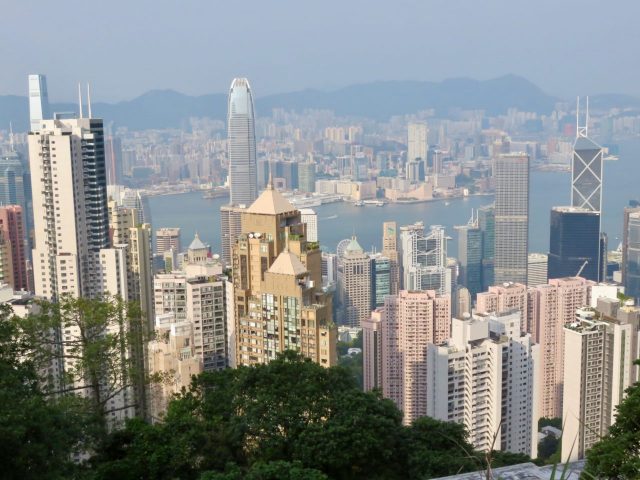
HONG KONG PROTESTS
Staycation in
a Battle Zone

COLIN SIMPSON and SUE BRATTLE
IN NORMAL times, this post would be called something like “7 Places You Simply Must See in Hong Kong”. But things have not been normal in the city since April, when large-scale protests against an extradition bill began.
The bill, which would have allowed extraditions to mainland China, has since been dropped. But the protests have continued as those involved pursue other demands.
Escalating levels of violence and destruction of property have created a sombre backdrop to life in what used to be a fun, buzzy place to live.
Tourist arrivals plummeted as the world watched endless news reports showing burning barricades, shops and train stations. Figures released yesterday by the Hong Kong Tourism Board show that total visitor arrivals in September were down 34 percent compared with the same month last year. The number coming from mainland China fell 35 percent, and hotels report a 50 percent drop in revenues.
Tourism is one of four “pillar industries” that have driven Hong Kong’s economic growth.
We decided to see how all this was playing out on the ground by visiting a selection of popular tourist sites across the territory and reporting what we saw. So we had a week-long staycation – spending each night at our apartment and going out every day to be tourists.
The months of upheaval on the streets have affected many people’s mood – in the words of one expat we spoke to, Hong Kong has become “a sad city”. We also wanted to see if it was possible to get away from the protests and relax while remaining in Hong Kong.
Sustainable tourism has become a hot topic, and of course flight-free staycations are about as green as you can get. We travelled only by bus, ferry and – in one case – funicular railway during our week as tourists in our adopted home city.
Violence reached a new level this weekend as demonstrators clashed with police across Hong Kong for 12 hours.
We won’t be commenting on the issues that triggered the protests or the response of the authorities – this is a travel, not a politics, platform. We simply want to gauge the impact of these events on a cross-section of attractions on a city that is highly dependent on tourism.
1) Sunday Afternoon on the Peak
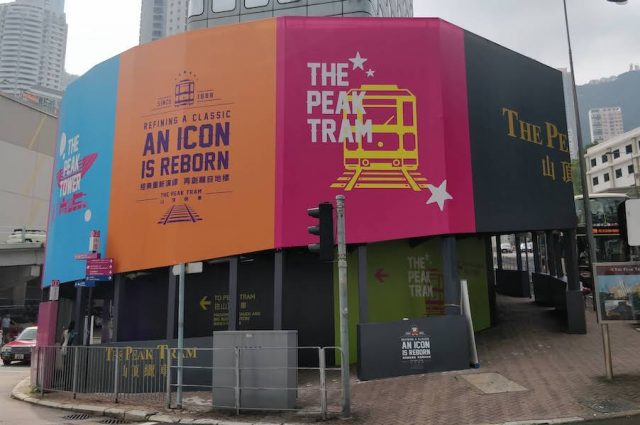
EVERY first-time tourist in Hong Kong makes a beeline for the Peak, the lofty viewpoint that offers spectacular views over Hong Kong Island and across Victoria Harbour to Kowloon.
Since 1888, the best way to get there has been the Peak Tram, a funicular railway that speeds up the slope, through leafy forests, in seven minutes and offers tantalising glimpses of the city along the way.
Now the tram has become a striking example of how tourism has been hit by the protests. The service recently reopened after a major refurbishment, but before the closure – and the protests – two-hour queues to get on board in Central were standard.
When we turned up on a Sunday in October, we walked straight on to the platform and waited just a couple of minutes to take our seats and start the ride.
Last month, protestors held a peaceful demonstration at the Peak, but when we arrived there was no sign of them. Nor was there any damage to buildings or graffiti, which you encounter in many parts of Hong Kong.
We were not surprised to find that there weren’t many tourists, and the restaurants in the Peak’s two malls had loads of empty tables. (It’s Hong Kong, so there have to be malls – them’s the rules.)
Read MoreThe Peak has a wonderful natural location and the views are fabulous, but it has to be said that the concessions made to tourism have not done it many favours.
When you get off the tram at the top you walk through a tacky gift shop stocked with garishly coloured items – key rings, nail clippers, panda toys – that were presumably meant for those missing mainland visitors.
There’s an unappealing Madame Tussauds place, and the whole site is overdeveloped. At least the toilets have been upgraded.
After having a look around and paying an extortionate HK$120 (US$15.30) for two drippy, single-scoop ice creams, we headed off down one of our favourite walking routes, the Morning Trail. As we left we wondered what level of unrest would be needed for the law of supply and demand to impact greedy ice cream vendors.
The trail took us to Sai Ying Pun, a historical district to the west of the city where we used to live. It’s a sensitive area as it’s close to the liaison office that represents the Beijing central government and has been the focus of some protests.
Nevertheless, SYP seemed its normal, messy self, and the only sign that things had changed was the presence of police patrols, each six strong with two officers carrying round riot shields. We had never seen these before, but they have been appearing on the streets across Hong Kong.
We walked back to Central via the terminal where ferries for the nearby gambling hub of Macau leave. This is often a crazily busy place packed with mainlanders, but this time it was quiet. The Starbucks was shut – a mainland company that’s hated by the protesters owns the franchise in Hong Kong.
Verdict: The Peak, for all the commercialisation and the sense of unease in the city, is always a great visit and, whisper it, the absence of crowds makes it even better.
Top tip: Don’t make the mistake of getting there, heading for the viewing platforms on top of the malls and then going straight back to Central. The walking trails are really great, so allow enough time to explore one of them and enjoy the clean air.












2) A Day Out in the Country
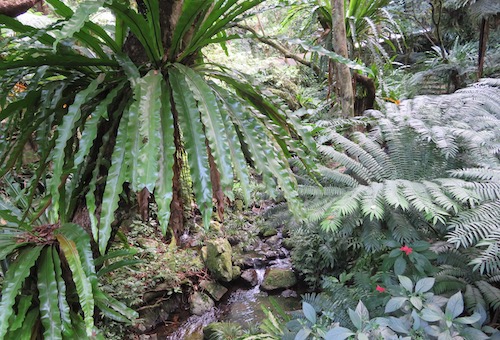
I LIKE everything about Kadoorie Farm and Botanic Garden, from its sense of tranquillity, the friendly staff, its ethics, the views… and it’s a really cheap day out.
It’s free if you’re under five or over 60, and HK$5 (64 US cents) for the 1.5 hour shuttle bus service that takes you all over the site and drops you off for short walks at points of interest. The highest-priced adult ticket is HK$30 (US$3.8), and once you’re in, you can stay all day to walk, gaze, or daydream.
Oh, there is one downside – it’s at Tai Po in the New Territories and for many it’s a trek to get there. For us it was three bus rides each way. However, the reward is that you’re really out in the countryside and have left urban Hong Kong well behind. Because the farm and garden are on a hill, once you’re at the top you can see clearly for miles around.
About the hill; that does mean, of course, that for a lot of the day you’re walking uphill, and it’s steep. With tourism down, there were only four people on our shuttle bus (there are four buses each day) but I imagine the bus struggles up the slopes when it is full. When you get off the bus, there are still usually steep paths or flights of steps to get anywhere, so be warned.
Read MoreIt’s an amazing story, told quite well in the modest farm museum which shares a roof with the farm shop and book shop. Again, everything from plants to fruit & veg are priced very low. I wished we had a car; I’d have stocked up on the many varieties of herb plants on offer at HK$10-20 each.
However, for me there were two highlights. First, the rescued raptors, which have a home for life if they need it. So an enormous owl that can’t fly, and a black kite with cataracts in both eyes are safe and cared for. There’s a snake hand-in point as well, and they get looked after if needed.
My other favourite was the wildlife pond. That may not sound exciting, but was a perfectly peaceful spot where I sat for a while spotting some of the 158 species of dragonflies flitting across the water and sunning themselves. Lovely.
There’s a small café (cheap, of course) which makes good coffee, refreshing teas and jolly nice muffins, along with other things. And the bus stops right outside the entrance gate.
Verdict: Dirt cheap day out and you really can get away from it all.
Top tips: Check your bus routes; they don’t necessarily use the same roads in both directions, so we had to do some quick map-reading in Tai Po to catch our connection. Wear sturdy walking shoes.
Postscript: No one in Hong Kong remains untouched by the protests. The Kadoorie family is the biggest shareholder in the company that owns the Peninsula hotel chain. When protestors and police clashed outside the flagship property in Kowloon on Sunday, the hotel opened its doors to help people affected by tear gas. – SB








3) A Night at Happy Valley
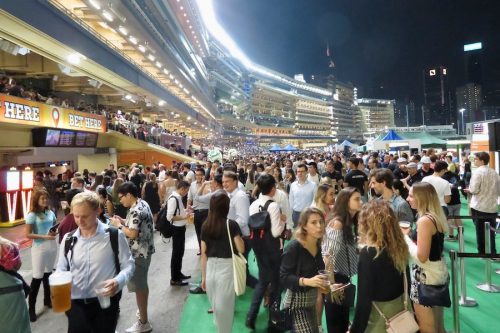
THE phrase “it’s an institution” is pretty overused by travel writers. Often it’s trotted out when the author is too lazy to think of something else. A bar that’s been open a few years, for example, is described as “a Dubai (or wherever) institution”.
When it comes to horse racing in Hong Kong, though, now that really IS an institution. The first race meeting in Hong Kong took place at Happy Valley in 1846 – just four years after the territory was ceded to Britain by China. The Hong Kong Jockey Club, which today runs the sport as a monopoly, was formed in 1884.
Racing has become phenomenally popular and generates huge amounts of money, with the club giving large sums to charitable causes – HK$4.3 billion (US$545 million) in 2018-19.
The Wednesday night meetings at Happy Valley Racecourse on Hong Kong Island are a magnet for locals, expats and tourists. Companies with offices in the city regularly welcome colleagues from branches across Asia and beyond who look forward to a night at the races.
A typical meeting sees HK$1.1 billion gambled, with HK$115 million going to the government in tax and the club retaining HK$52 million for costs and donations.
Yet even this much-loved part of Hong Kong life has not escaped the fallout from the protests. A Happy Valley meeting due to take place on Sept. 18 was cancelled over fears of disruption. This was because a horse owned by a pro-Beijing lawmaker disliked by the demonstrators had been due to run.
Meanwhile, the annual Sunday meeting at Happy Valley which was due to take place on Oct. 27 was switched to Hong Kong’s other racecourse, Sha Tin in the New Territories, because of fears that protests would cause disruption.
The Happy Valley course, with its bank of seven-storey stands, can hold 55,000 spectators. We went there a couple of weeks ago, a fortnight after Sha Tin attracted its lowest attendance for a weekend meeting in years. Transport disruption caused by the protests and the general chaos in the city were blamed.
We were curious to see for ourselves how racing was faring amid the continuing turmoil. Our taxi took us through Causeway Bay, an upscale shopping district that has been a focus for clashes.
When we arrived the course was quiet, and we wondered whether the Sha Tin experience would be repeated. I took a photo, looking down from the grandstand, of some of many empty seats.
Gradually, however, the numbers increased and the atmosphere warmed up. People in Hong Kong work unhealthily long hours, so perhaps it was just that some had not been able to get away from the office in time for the first race.
The racecourse is a fabulous facility. Everything is smart, bright, clean and comfortable, and the night-time outlook over the floodlit turf course to the towers beyond is striking. The only downside was that we were there during the Oktoberfest celebrations, so there was an oompah band.
As the night wore on, fortified by the odd win and each-way success, we began to really enjoy ourselves, as everyone else seemed to be doing. A foray to the beer garden gave a welcome glimpse of the old Hong Kong – work hard, play hard and may the Devil take the hangover. It was great to see groups of lively, noisy people laughing, drinking and having a good time.
There has been much talk of a so-called expat bubble, of well-paid office workers from abroad continuing with their lives as if the protests weren’t happening.
I don’t buy this, as I don’t see how anyone could remain oblivious when, for example, the metro system most people rely on has been so heavily disrupted. I didn’t see a bubble at Happy Valley, just young people enjoying a fun night out that they probably felt they needed.
Besides, the racing is not just an expat party. There were many serious-looking older Hongkongers with racing papers, form guides and multiple phones.
The Sha Tin course is very much set up for the locals. It doesn’t come close to Happy Valley, though, for sheer excitement, fun and charisma.
Verdict: The old Hong Kong spirit survives at Happy Valley.
Top tip: The second floor terrace in the grandstand is a great place to watch the racing from. It costs just HK$20 to get in and you have a reserved seat, so you can head for the beer garden or check out the parade ring, then go back to the terrace. – CS











4) A Walk Along Nathan Road
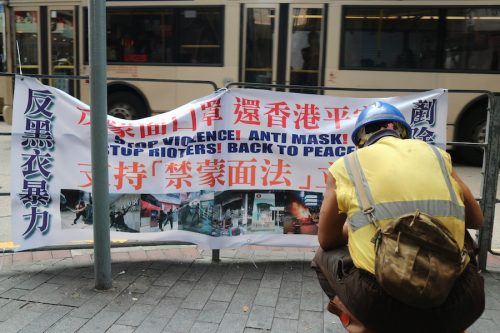
WE TOOK this two-mile stroll on Thursday, October 17. The date is important because three days later violence broke out here during a Sunday protest, with pepper spray, petrol bombs, water cannon firing blue dye, shops, banks and restaurants trashed and multiple arrests.
It’s a good example of what Colin and I wanted to do with our Staycation series. In times of unrest, things turn on a sixpence, but although the events of Sunday saddened both of us, our brief here is: Is it possible to have a holiday in Hong Kong despite the protests?
And on that Thursday we had a civilised walk in Kowloon from the wonderful Star Ferry pier to the markets in Mong Kok up to Prince Edward, the northern end of Nathan Road. In one walk you can see much of what makes Hong Kong so vibrant. Starting with posh shops (which I find bland and boring) you quickly reach delights such as Kowloon Mosque, St Andrew’s Church, and Kowloon Park.
You can go inside the mosque, unlike many I’ve known, and half an hour’s quiet contemplation in St Andrew’s makes a nice break, too. Kowloon Park has a weird yet wonderful walk of cartoon fame, with great statues.
Keep going and the atmosphere and look of the road changes. The road is still straight and quite busy, but the shops, apartment blocks, and hotels change as you approach the large Tin Hau Temple. You might like to make a diversion here to Shanghai Street just for a look, or stay on Nathan Road till you reach Mong Kok. You’re now in street market central.
If your shopping gene is going to kick in anywhere, it will be here. Just a short-ish walk from Tiffany’s near the start of the road, here you can buy endless knock-off handbags, pashminasand watches in the Temple Street night market (the first one you come to) and the Ladies Market (both of which to be honest I thought were disappointing); visit Goldfish Market and Flower Market; or, my favourite, go to Sneaker Street where everyone’s sneaker of choice is for sale in branded shops at quite decent prices. Maybe the markets have been hit by the protests. There was hardly anyone around, although things perked up in Sneaker Street, and it was really noticeable that the stock was the same on stall after stall.
However, this is the part of Nathan Road that’s awash with colourful apartment blocks, unusual little shops and side streets, and the Hong Kong I prefer. The high-end shopping malls sap my energy, but the buzzy street life is energising and, if you’re a tourist, there’s a photo opportunity everywhere you look.
So that’s our walk, a simple afternoon/evening out. Cheap, too, if you eat at one of the zillion food stalls and don’t go mad for sneakers. There was protest-related damage almost the entire length of the street, with MTR signs defaced, Chinese-owned banks and shops boarded up, and probably thousands of posters everywhere. As I said, a few days later things got a lot worse. But did we ever feel in any danger? No.
Verdict: Despite everything, something I’d recommend to every visitor and resident.
Top tip: if you do veer off to Shanghai Street you’re only a stone’s throw from the Xiqu Centre, the city’s fab new opera house, well worth a look. – SB












5) A Trip to Tai O

UNTIL a little while ago, if you said “Hong Kong” to someone then it’s likely the first image that would spring into their mind would be the iconic cityscape. That’s what defined the city – gleaming towers soaring skywards on both sides of Victoria Harbour.
Now, six months after the start of the anti-government protests, they would be more likely to think of burning metro stations, billowing teargas and violent clashes.
That old image of Hong Kong was misleading, though – there was always a lot more to it than skyscrapers.
Much of the territory is made up of country parks, and there are plenty of fine beaches. Then there are traditional fishing villages such as Tai O on the western edge of Lantau Island. All of these were good options when you needed a break from the frantic pace of city life.
This is more important than ever in the current difficult times. We wanted to get away from the constant reminders of the showdowns between protesters and police – the graffiti in normally pristine Central, the endless news coverage. So we decided to head off to Tai O.
Our plan didn’t start well, however. When we got to Tung Chung on our way there we found the metro station half shut because of damage caused during protests, and anti-government posters and fliers plastered everywhere.
But once we reached Tai O the only protest-related items we saw were a few of the origami cranes made by some demonstrators to promote peaceful resistance. They had been placed on a post in the centre of the village.
Not that Tai O remained untouched. A day out there has always been popular with tourists who want to see a slower, simpler, more traditional side of Hong Kong life. They came to wander through the small village with its waterways and dried seafood shops, go on short boat trips in the hope of seeing pink dolphins, and gaze up at the surrounding hills. At weekends, the narrow streets were often overwhelmed with visitors.
This time, however, we saw hardly any tourists. The dolphin boats were still going out, but with only a few people on board. And the restaurant at the Tai O Heritage Hotel, where we went for lunch, had only a handful of guests.
The hotel, a converted marine police station, has a commanding view of the bay on which Tai O stands – all the better for keeping an eye out for the smugglers who used to frequent these waters. Beyond the bay is the South China Sea, and further out, over the horizon, is mainland China. Each of the hotel rooms has a plate by the door explaining what it was originally used for.
Many of the villagers are Tankas, boat people who traditionally lived on junks. At Tai O, they have stilt houses that protrude from the shore over the water and use flat-bottomed boats known as sampans. Some make shrimp paste to sell to tourists, though personally I find its sludgy brown appearance unappealing. The village itself can look a bit sludgy when the tide is out and the muddy foreshore exposed.
We enjoyed our visit to Tai O, though. The fanciful description of it as the “Venice of the Orient” is ridiculously exaggerated, but it does have a special charm and a welcome balming effect.
Verdict: Yes, it really is possible to get right away from the protests.
Top tip: If you’re going by ferry make sure you check the times in advance, or you might find yourself waiting for hours. You can also get there by bus. – CS












6) A Junk Ride to Stanley

ONE of the easiest touristy things to do in Hong Kong is to take the junk ride from Central around to the pretty seaside town of Stanley. The voyage lasts 1.5 hours, and there’s nothing to do on board except sip a cool beer or soft drink while you watch the coastline bob up and down.
In happy times, the junk does the trip four times a week, but during our staycation with the protests still going on and the tourist numbers plummeting, there were only two sailings, on Saturday and Sunday.
We booked ahead, but there was no need on the Saturday we went. There were 13 of us on the top deck, which holds 50 people on its enormous daybed-type loungers. A few more sat on the lower deck, and a handful boarded in Tsim Sha Tsui, but that was it.
That suited me fine, and added to the soothing atmosphere, helped also by beautiful Chinese music being played softly throughout. The staff are friendly and helpful, and with a blue sky and blue sea, Hong Kong’s many islands drifted by.
The junk is called the AquaLuna and is a common sight around Hong Kong harbour. It was built a few years back with the help of an elderly craftsman, it’s made entirely of wood and bamboo, and no nails were used. The distinctive and traditional red sails look lovely, but in fact this junk is motorised.
It docks in Stanley at the equally distinguished-looking Blake Pier, which started life at the end of Pedder Street in Central and is named after Hong Kong’s 12th governor. If you’re doing the round trip, you now have two hours to get a bite to eat or wander around Stanley.
We opted for a one-way trip, for HK$295 each (US$37), so could stay in Stanley as long as we liked. We walked through Ma Hang Park and visited the Pei Ti temple with its fabulous views out to sea, then had pizza and a beer on the sea front.
We took a look at the famous Boat House, which is apparently due to be demolished soon to make way for a 10-storey hotel, and walked through a very quiet, if not almost comatose, Stanley Market, before catching a bus back to Central. The bus station, usually a scrum, was calm and peaceful and we both got seats for the whole journey, which is not normally the case. We were a long way from the protests, but the effect of them was obvious everywhere.
Verdict: One of the most soothing things to do in Hong Kong.
Top tip: Sail from Pier 9 on Hong Kong Island to nab the best seats before it loads up at Tsim Sha Tsui. – SB
Updated November 2, 2019










7) A Saturday in Central

THIS was the simplest of our staycation days, and will be familiar to many who live in Hong Kong. An afternoon at the cinema, then supper and home. We chose a Saturday because these days most protest activity takes place at the weekends, and a lot of it has been in Central.
In fact, last night (Nov. 2) was a gamechanger, with upwards of 12 hours of violence and mayhem across Hong Kong, both sides of the harbour. Multiple arrests, tear gas, Molotov cocktails, two incendiary devices disabled, almost 20 injured – Central, the Western district, Nathan Road, Mong Kok, Prince Edward, Causeway Bay and Wan Chai were all affected, and all places where tourists would be on a Saturday night out.
Consequently, I am rewriting this because the original version, which emphasised how peaceful our day in Central was, would be misleading in the changed circumstances. However, back to our walk two Saturdays ago.
We live in the outlying islands, and our ferry brings us to Central Piers, so we walked along the harbour front and through Tamar Park, past the Legislative Council building, or LegCo, Hong Kong’s government complex.
This had been trashed a few weeks earlier but had just been repaired, and was surrounded by barricades. There were still protest signs painted onto the walkways, but graffiti had been hastily removed, leaving splodges of grey everywhere, and posters torn down. This usually pristine complex looked tatty but not damaged.
Read MoreKeep walking and you quickly come to Pacific Place in Admiralty, an upmarket backdrop to many local protest marches and flashpoints. Previously we’d watched the peaceful Two Million march from a bridge here, but that seems another lifetime ago.
A week before our visit, the cinema we were heading for was evacuated when tear gas seeped into the building. From time to time, the main entrances have been shut and on our visit there was only one door open.
This is a world of Harvey Nicks, Kate Spade, and so on. You get the picture. We were there to see the National Theatre Live’s Antony and Cleopatra (brilliant, by the way) but long enough to have an interval. Checking our phones, we found petrol bombs had been thrown into an MTR station in Kowloon and there was serious violence and mayhem there later.
This was our first visit to Admiralty and Pacific Place for a long time without seeing any protests, and we hopped on a tram and went back to Central for a walk to The Globe, a gastropub favoured by expats that we visit a few times a year so Colin can drool over the pages and pages of beers it offers. It was eerily quiet walking through Central’s back streets, no one around anywhere. But the pub was packed because the Rugby World Cup was being shown live on big screens.
There’s been a lot of talk of an “expat bubble”, though the idea that anyone in Hong Kong could be oblivious to the protests seems unlikely – particularly as the MTR network, which most people rely on, has been badly affected and now imposes what many see as a curfew by shutting down early. But here, as the excited crowd watched yet another World Cup walkover, there was a glimpse of the old, pre-protests Hong Kong just having a good time. When we headed out, the streets again seemed quieter than normal on a Saturday night.
As I’m writing this, Central has witnessed two violent clashes in the past week, firstly on Halloween and, as mentioned above, last night. Roads were already being blocked off at 7pm when we were in Central on Halloween this past Thursday.
Verdict: The “be water” protests – smaller groups on the run – means it’s harder to predict where activity will spring up. This makes it difficult for me to recommend a break in Hong Kong right now. Staycation, yes, because if you live here, unless you’re hiding under a rock, there are protest schedules you can consult as a rough guide. But why would you want to spend your Saturday night out in Hong Kong holed up in your hotel?
Top tip: In peaceful times, take time to walk around Central, there’s lots to see apart from the shops. Hollywood Road is a must. – SB







Five Things We Learned From Our Staycation
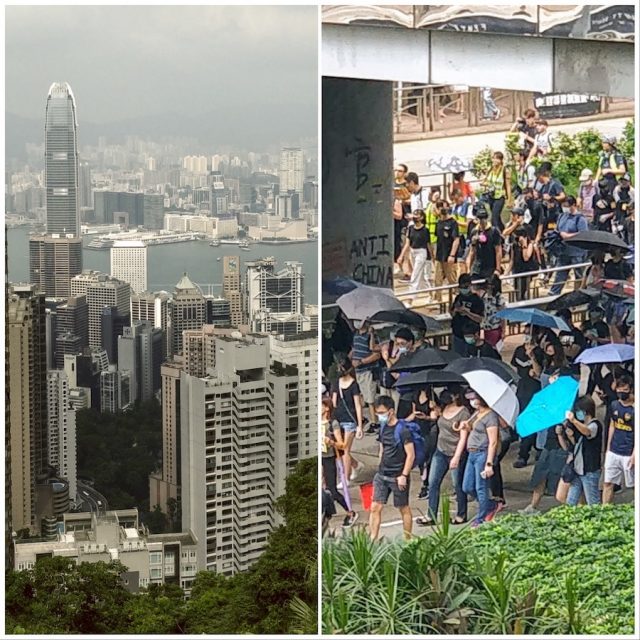
- One thing became clear – everywhere we went, there were very few tourists. We have to admit this made our visits to popular attractions more pleasant than usual, though obviously we regret the circumstances. The Hong Kong Tourism Board last week published total visitor arrivals figures for September, which showed a 34 percent drop compared with the same month last year. From what we saw on the ground, we suspect the impact of the protests on the leisure tourism sector, as opposed to business travel and visits for family reasons, is greater than these numbers suggest.
- Hong Kong can be a surprisingly cheap place for sightseeing. Travelling on the extensive public transport networks is inexpensive, while admission fees are generally very low, and often free for young children and the over-60s. However, the protests have repeatedly caused extensive disruption, particularly to the MTR metro system.
- Our staycation reminded us how many great places and things to see there are in Hong Kong, and how diverse they are. Going forward, we’ll be having more days out.
- Some expats have been criticised for living in a so-called “bubble” – carrying on as before, oblivious to the protests. We did see some instances of this, mostly because our staycation clashed with the Rugby World Cup. One evening we were at a bar showing a match on some screens and live coverage of the violence happening just a few streets away on others. No one was watching the protests.
- We’ve long felt that Hong Kong is complacent when it comes to tourism, one of its four so-called “pillar” industries. There are only six tourist information offices in total, all but two at points of entry. How come there is no office to help tourists wandering around Central? Notable attractions are not promoted effectively – do many visitors know, for example, that Hong Kong has the world’s highest bar, Ozone at the Ritz-Carlton in Kowloon? Likewise, are they told about costly new cultural facilities such as the Xiqu Centre and Tai Kwun? The tourist board concentrates on pushing brand Hong Kong with slogans such as “Best of All It’s in Hong Kong”, which looks more ill-advised by the day. Perhaps now conditions are so much tougher there’ll be a much-needed rethink.
Updated January 2020
RELATED
 PINK DOLPHIN WATCHING: Another once-popular tourist attraction in Hong Kong that has been badly hit by the protests as the number of people taking part has plummeted. READ MORE
PINK DOLPHIN WATCHING: Another once-popular tourist attraction in Hong Kong that has been badly hit by the protests as the number of people taking part has plummeted. READ MORE
 XIQU CENTRE: Futuristic Home for an Ancient Artform. Everything you need to know about this exciting new opera house, including details of performances where tea and dim sum is served. READ MORE
XIQU CENTRE: Futuristic Home for an Ancient Artform. Everything you need to know about this exciting new opera house, including details of performances where tea and dim sum is served. READ MORE
 EXTENSIVE LOCAL COVERAGE of the protests is available online from the South China Morning Post and the Hong Kong Free Press.
EXTENSIVE LOCAL COVERAGE of the protests is available online from the South China Morning Post and the Hong Kong Free Press.
 WELCOME TO OUR WORLD! Afaranwide’s home page – this is where you can find out about our latest posts and other highlights. READ MORE
WELCOME TO OUR WORLD! Afaranwide’s home page – this is where you can find out about our latest posts and other highlights. READ MORE
 TOP 10 ATTRACTIONS: Many of the world’s most popular tourists sites are closed because of the coronavirus crisis, but you can still visit them virtually while you’re self-isolating. READ MORE
TOP 10 ATTRACTIONS: Many of the world’s most popular tourists sites are closed because of the coronavirus crisis, but you can still visit them virtually while you’re self-isolating. READ MORE
 SHIMLA, QUEEN OF THE HILLS: Government officials once retreated to Shimla in the foothills of the Himalayas to escape India’s blazing hot summers. Now tourists make the same journey. READ MORE
SHIMLA, QUEEN OF THE HILLS: Government officials once retreated to Shimla in the foothills of the Himalayas to escape India’s blazing hot summers. Now tourists make the same journey. READ MORE
 TEN THINGS WE LEARNED: Our up-to-the-minute guide to creating a website, one step at a time. The costs, the mistakes – it’s what we wish we’d known when we started blogging. READ MORE
TEN THINGS WE LEARNED: Our up-to-the-minute guide to creating a website, one step at a time. The costs, the mistakes – it’s what we wish we’d known when we started blogging. READ MORE
 TROUBLED TIMES FOR EXPATS: Moving abroad can seem an idyllic prospect, but what happens when sudden upheavals or the inescapable realities of life intrude? READ MORE
TROUBLED TIMES FOR EXPATS: Moving abroad can seem an idyllic prospect, but what happens when sudden upheavals or the inescapable realities of life intrude? READ MORE